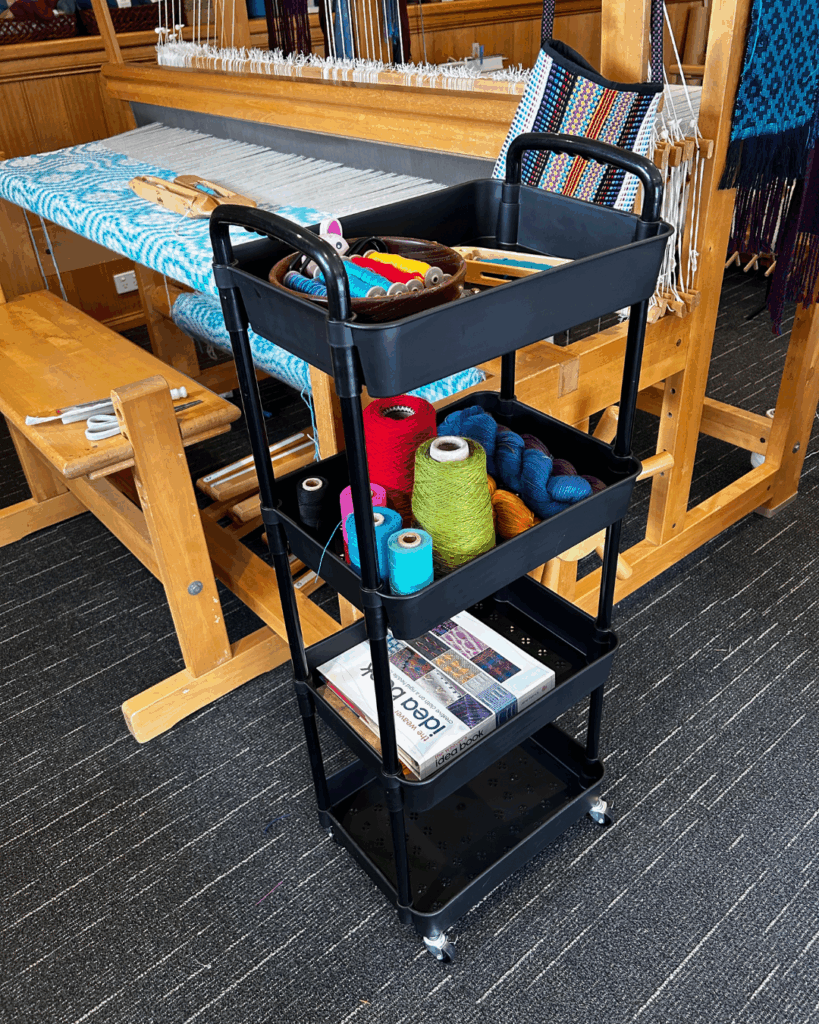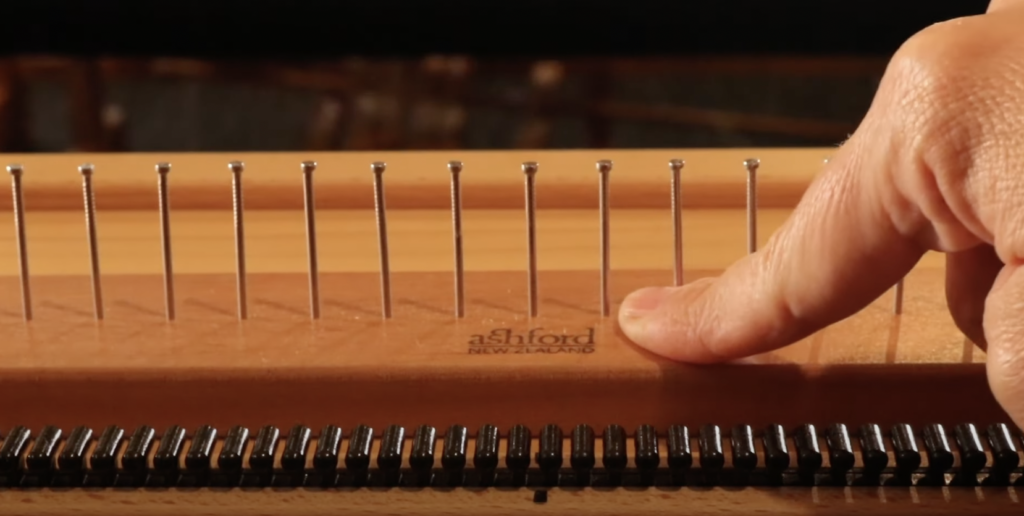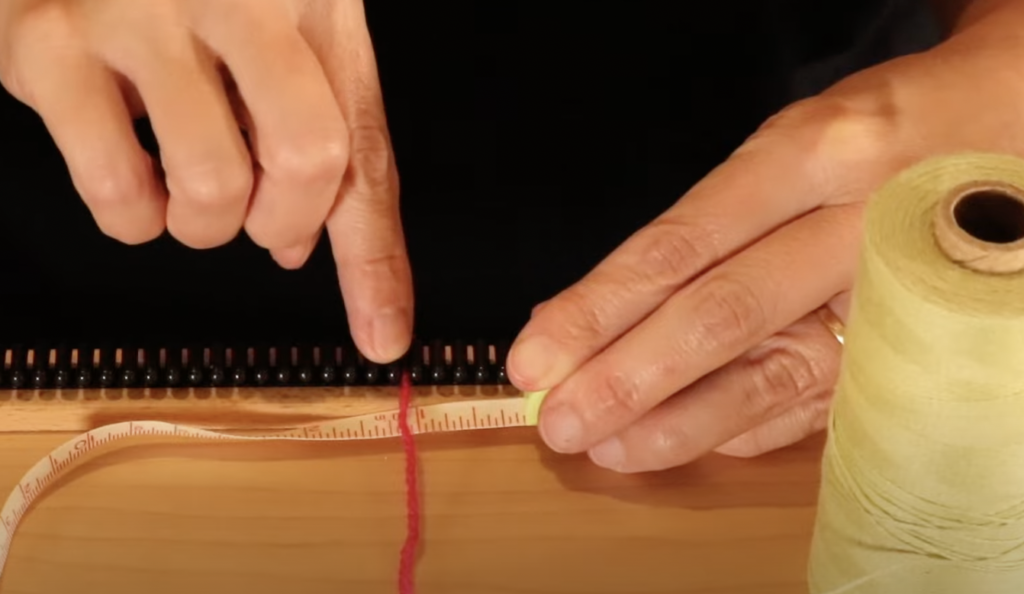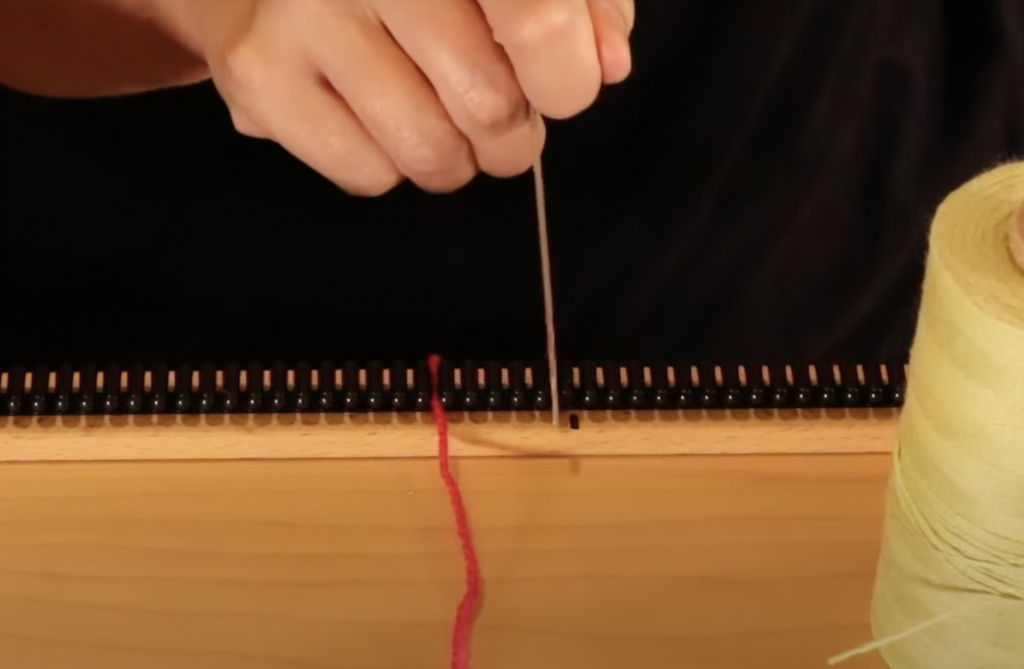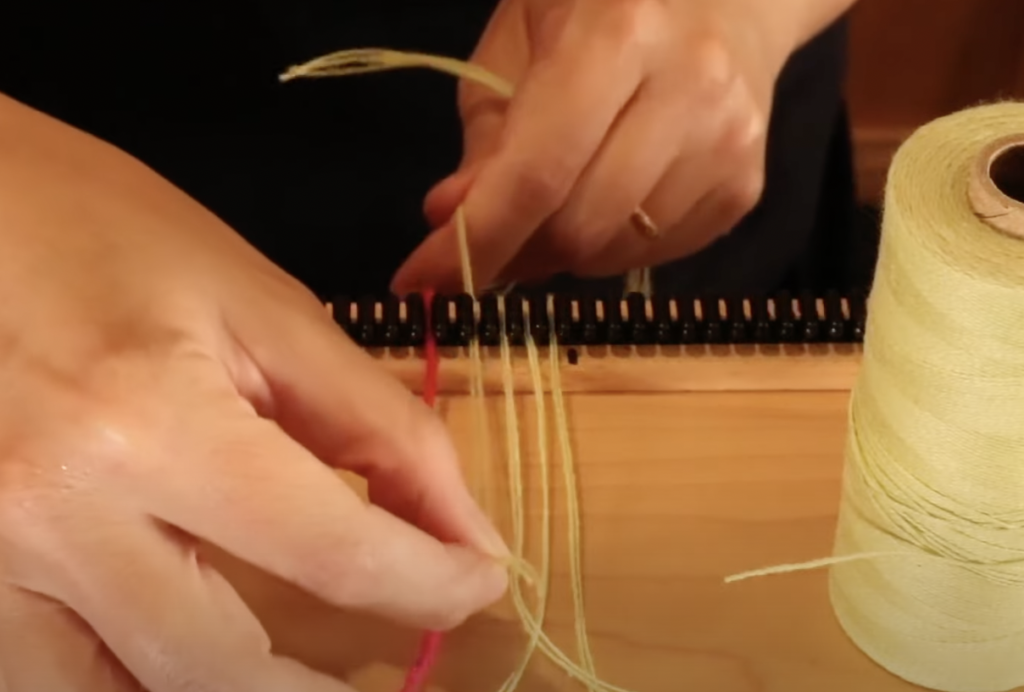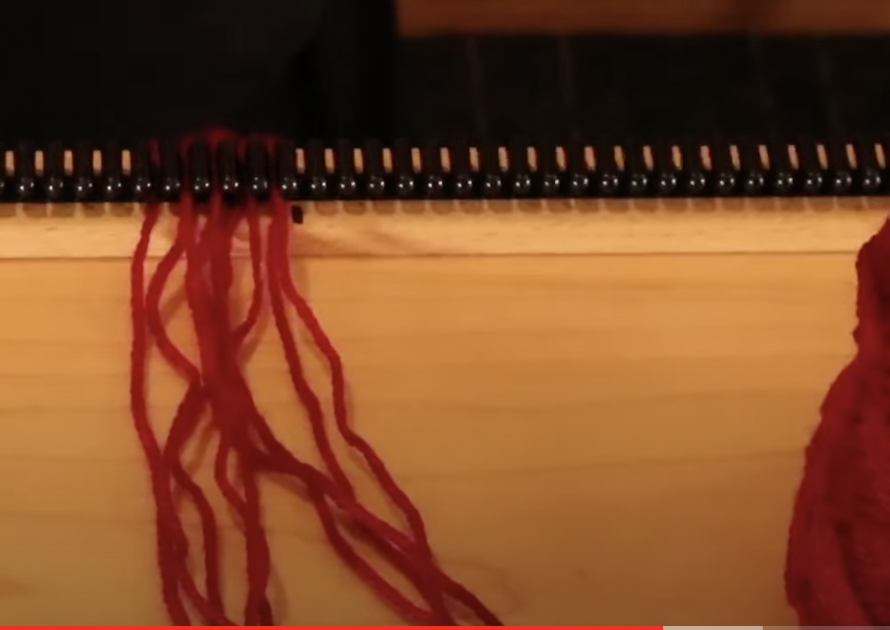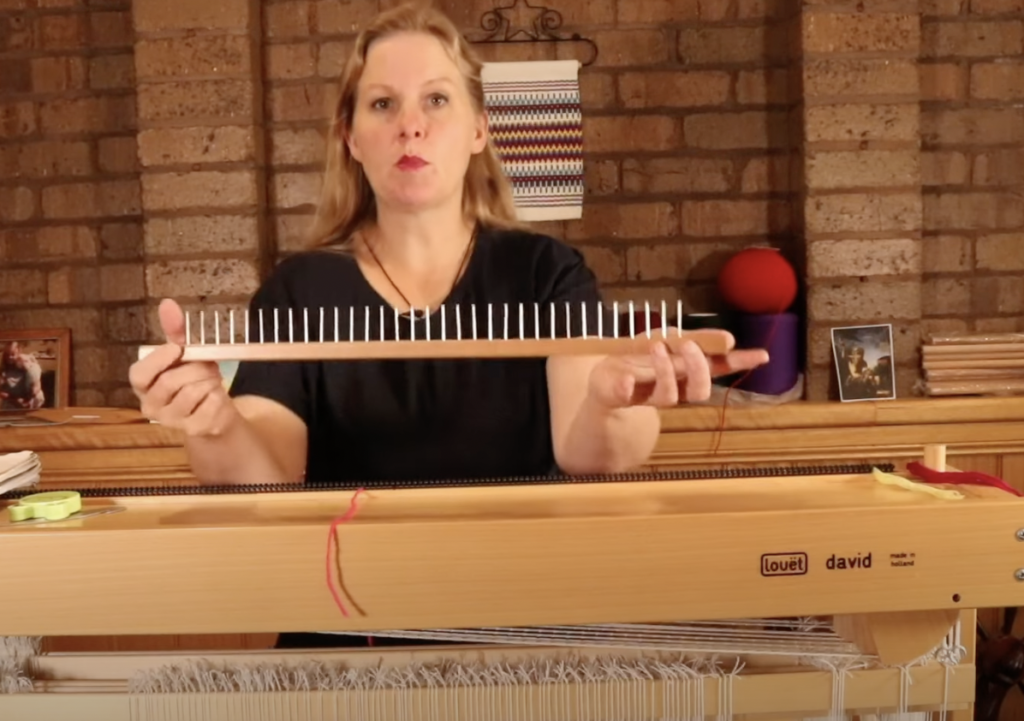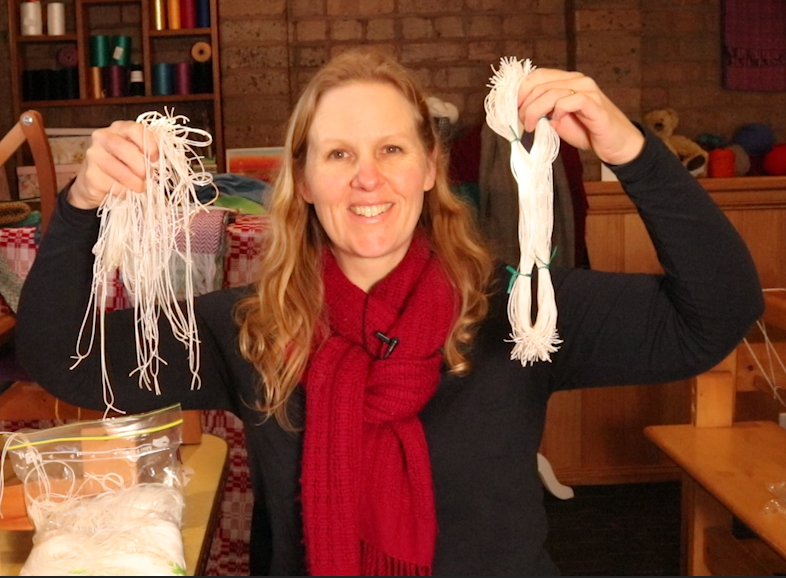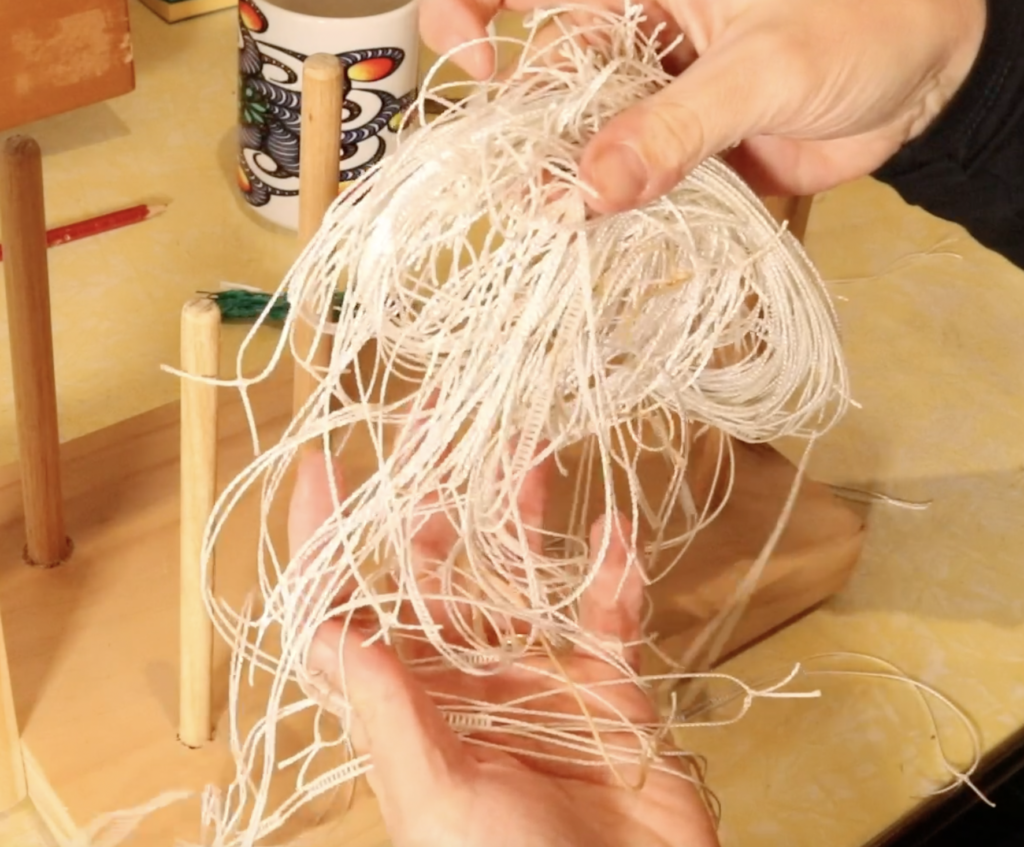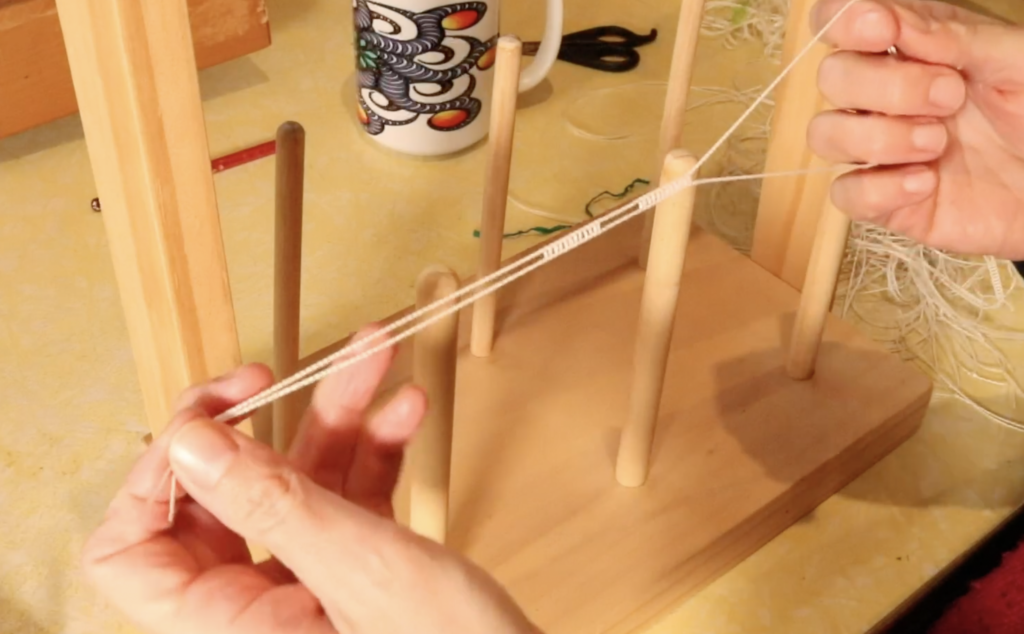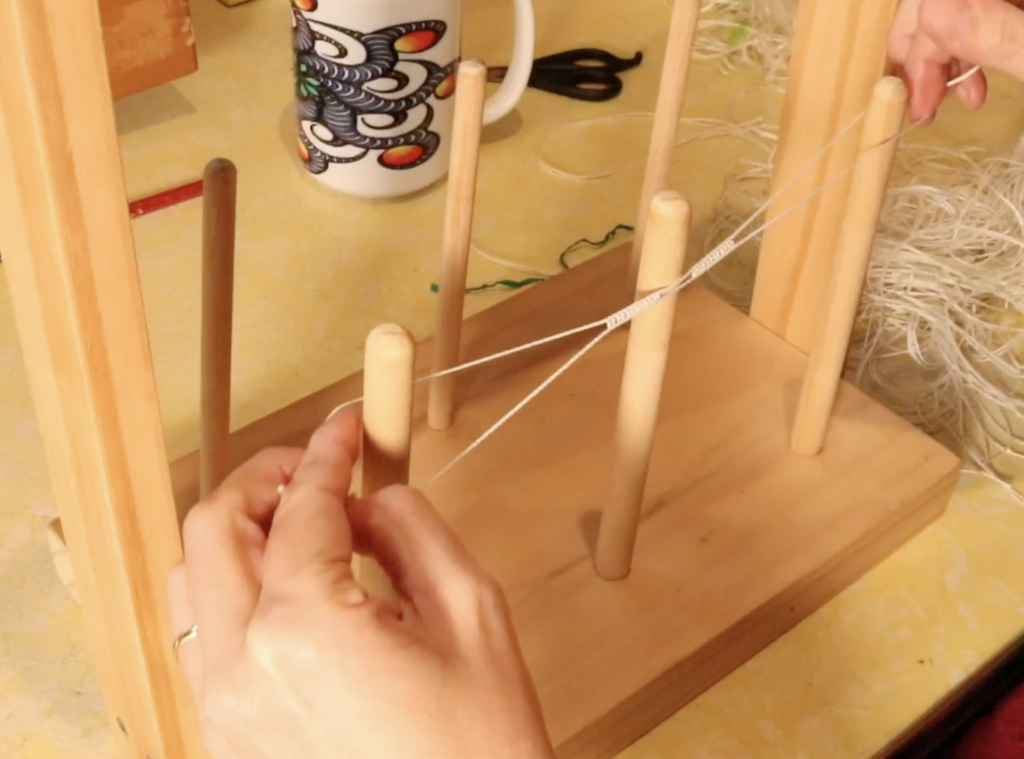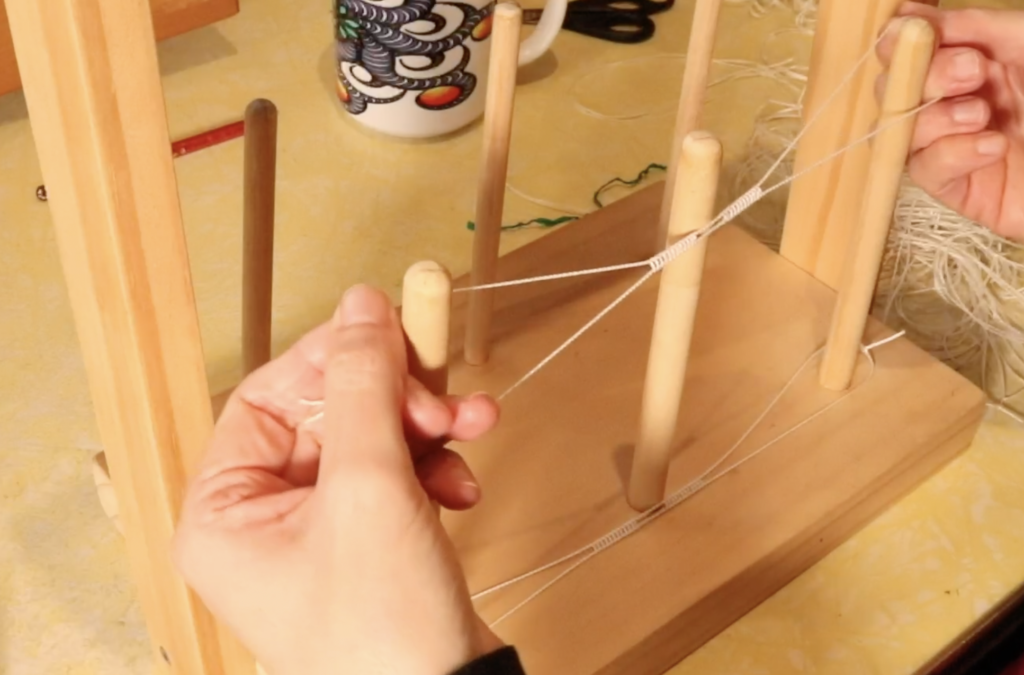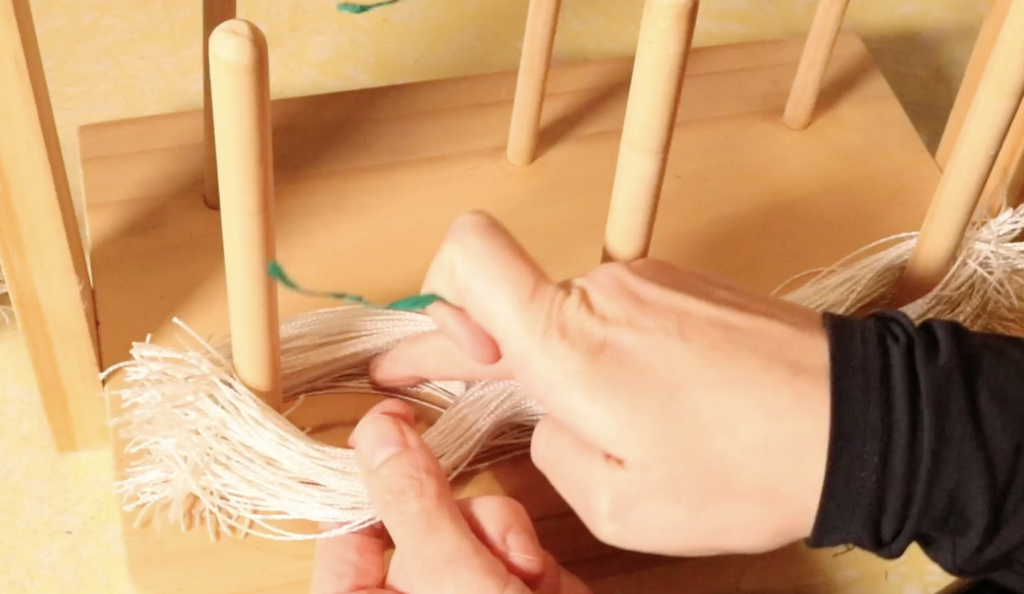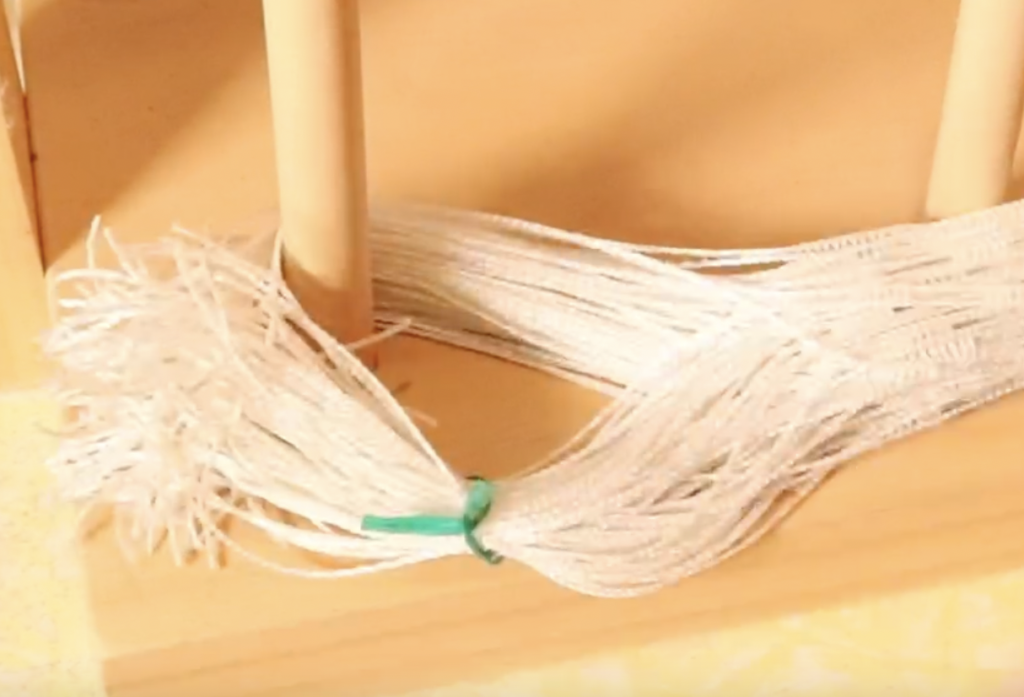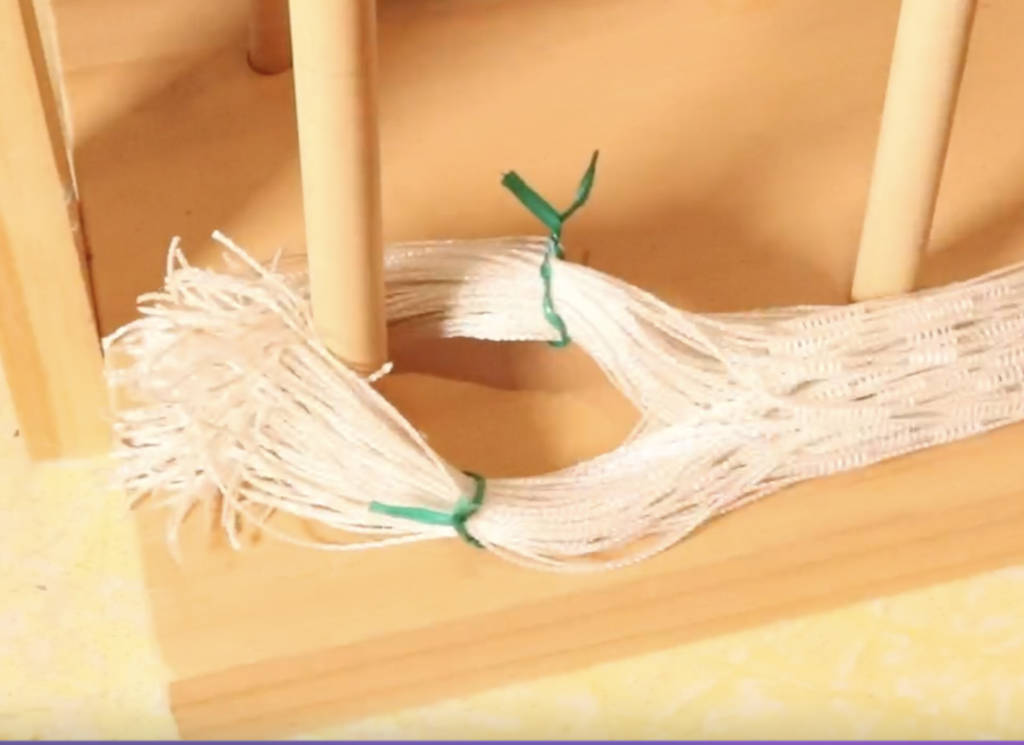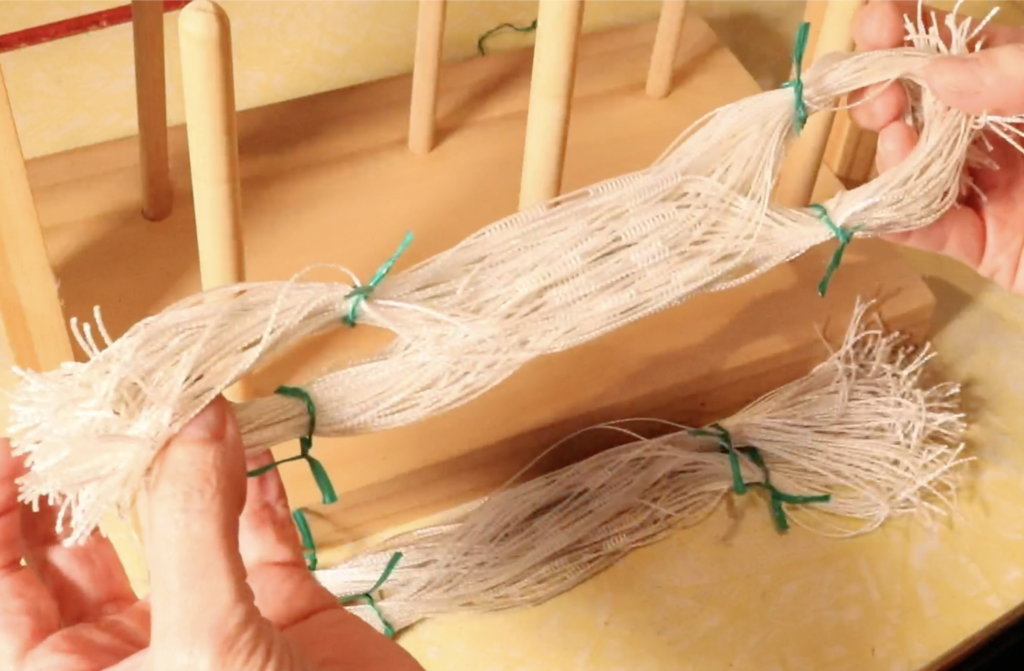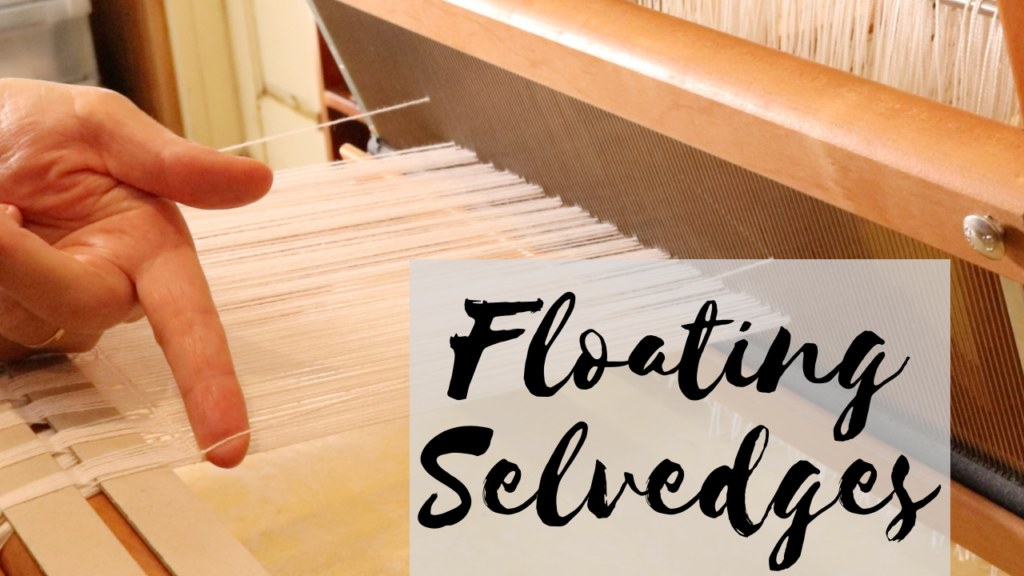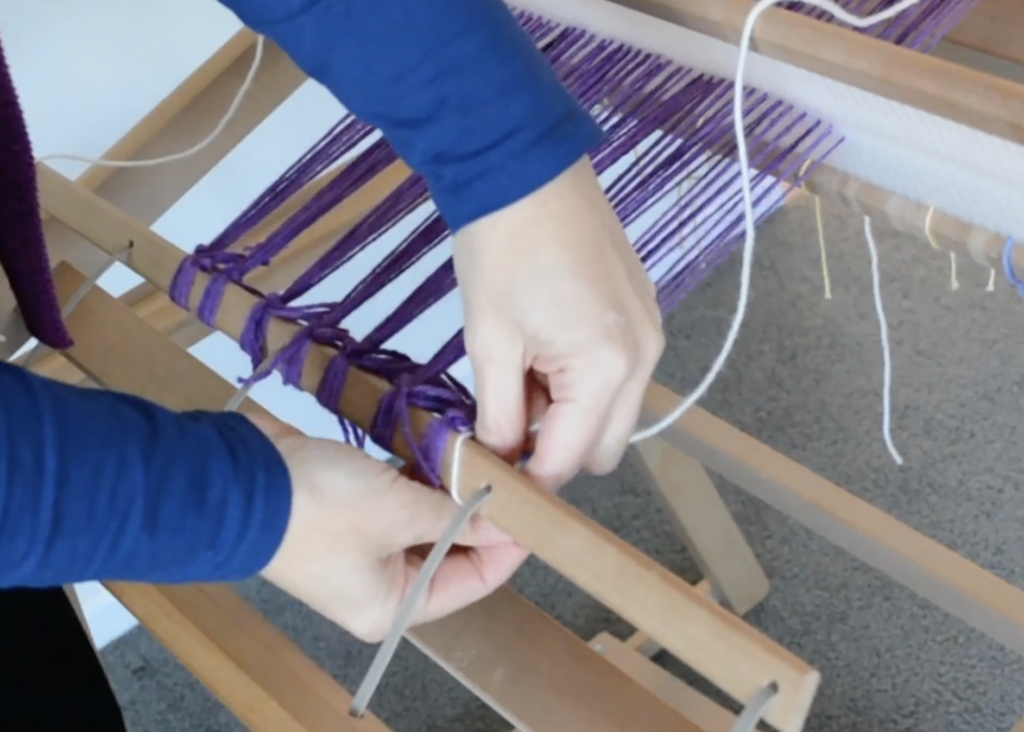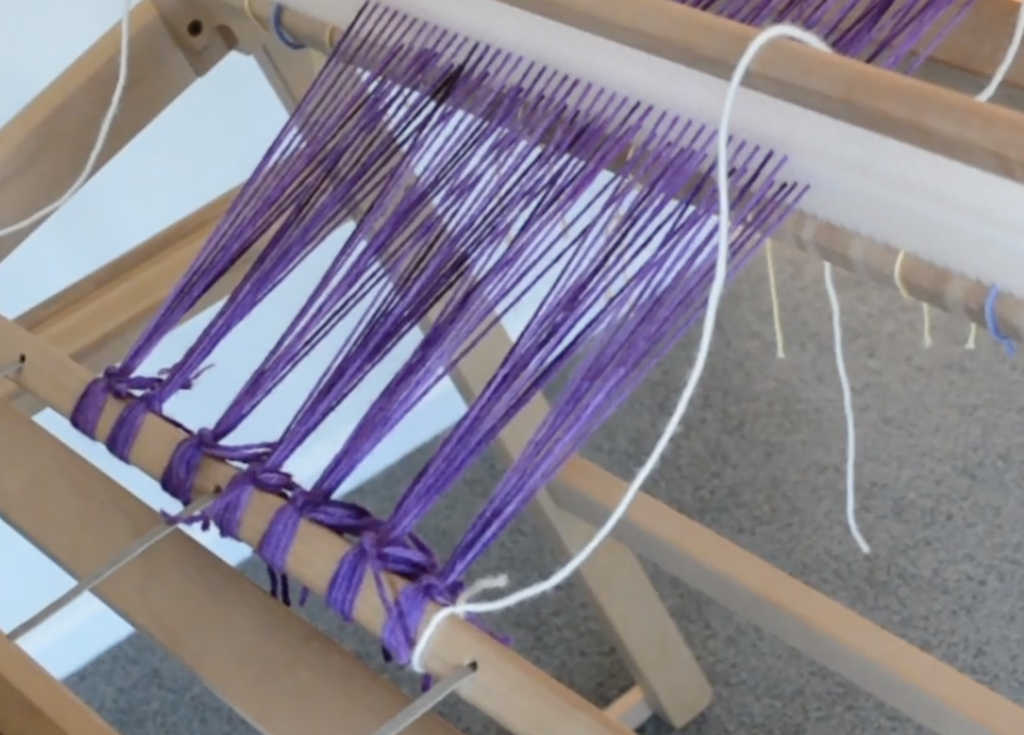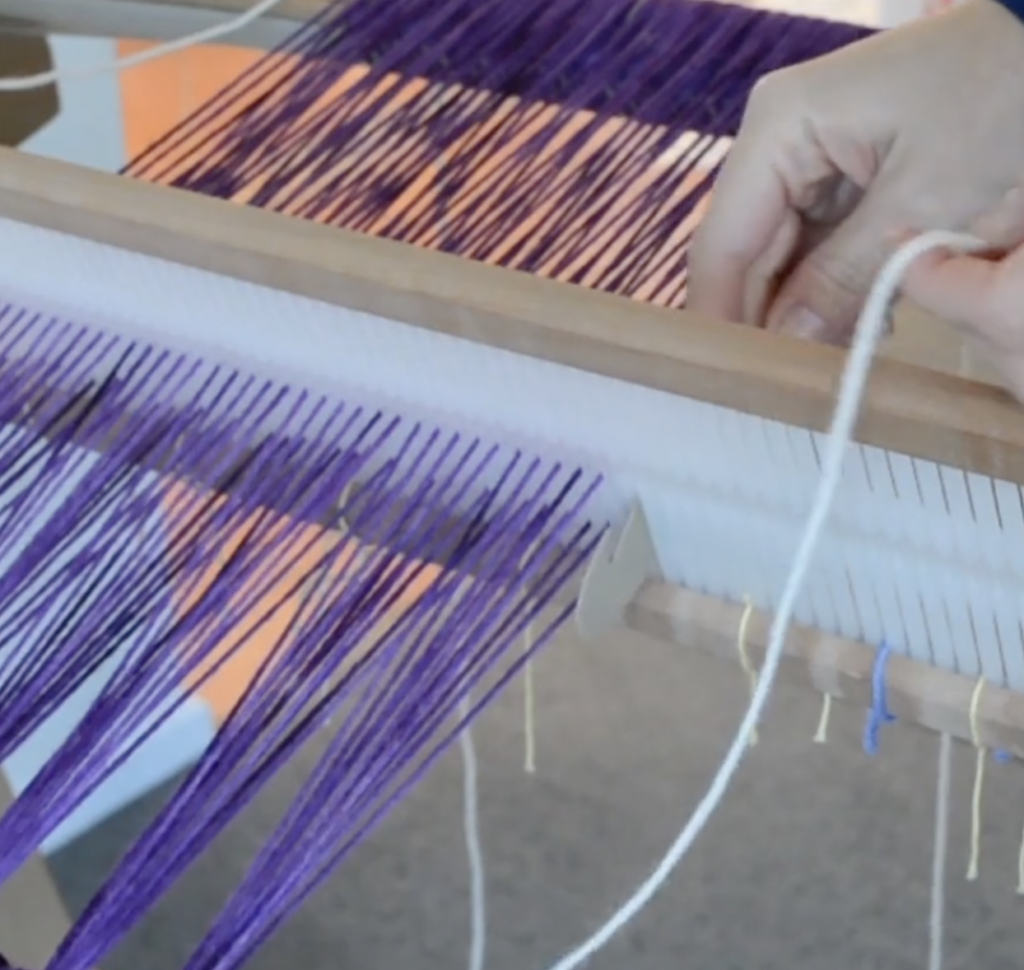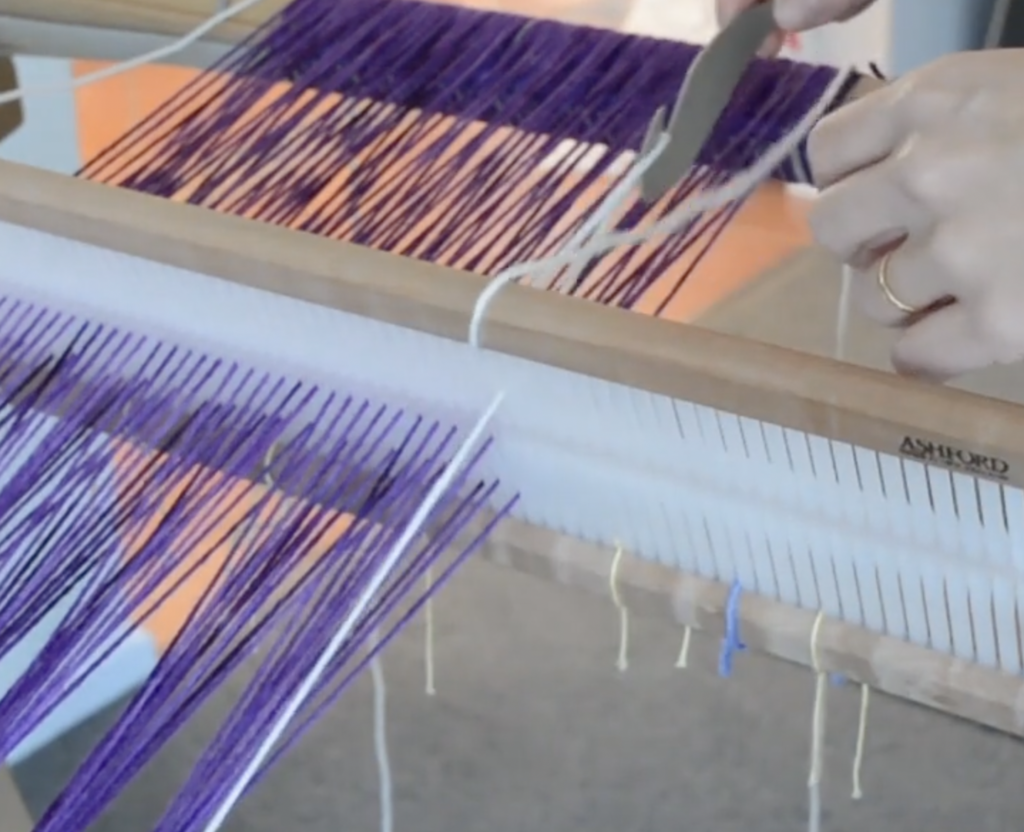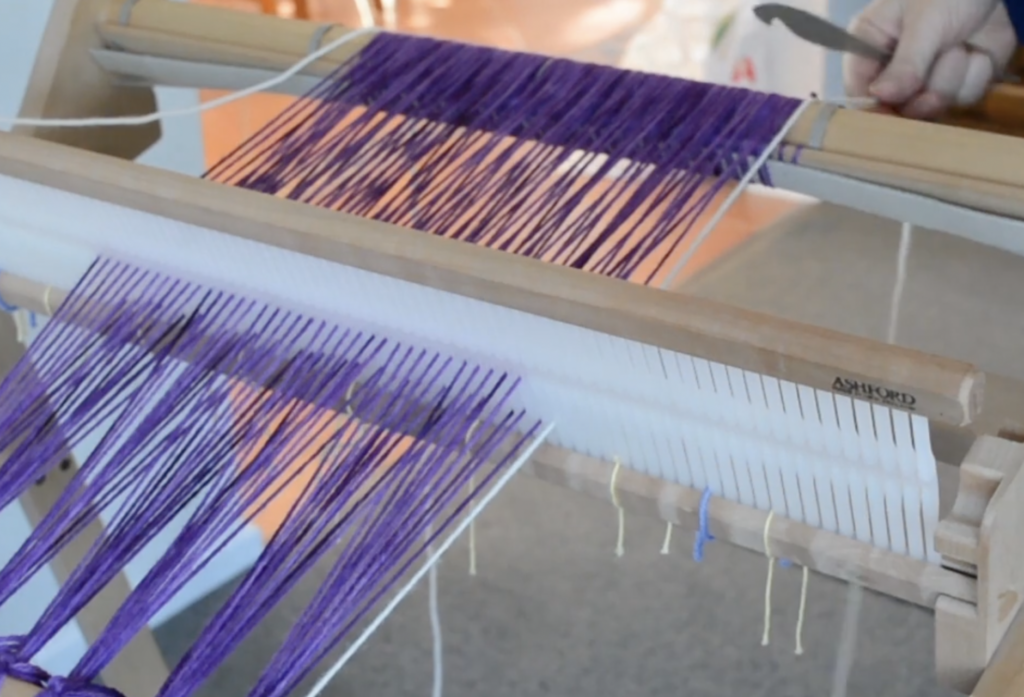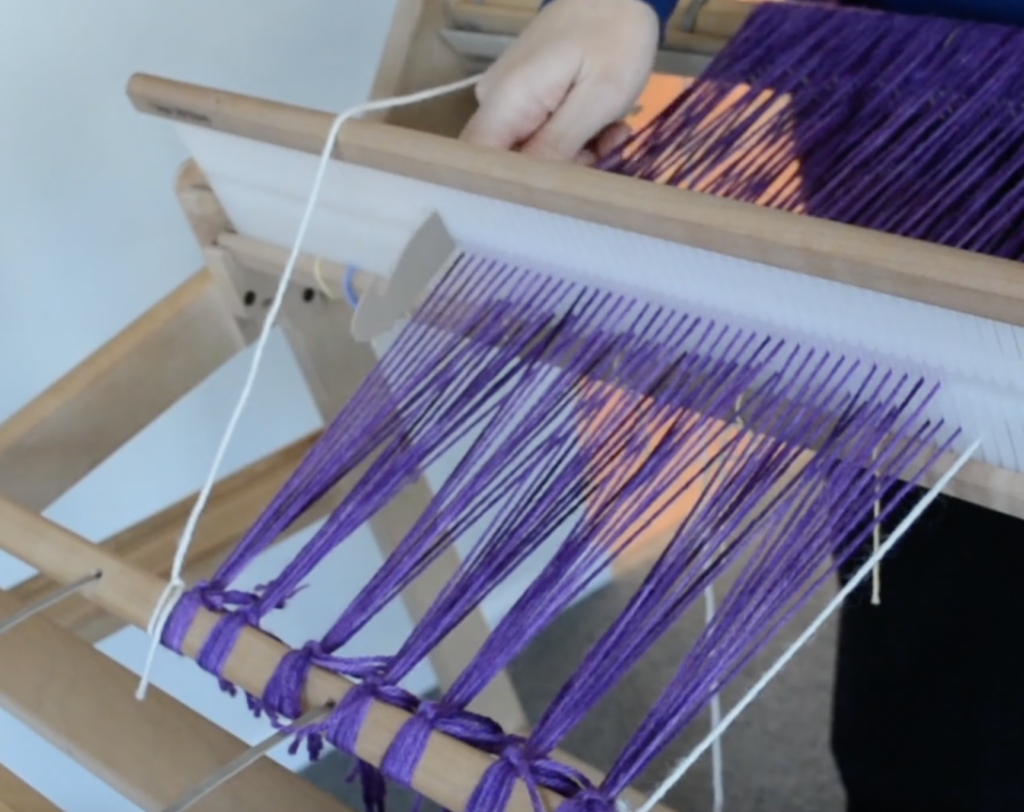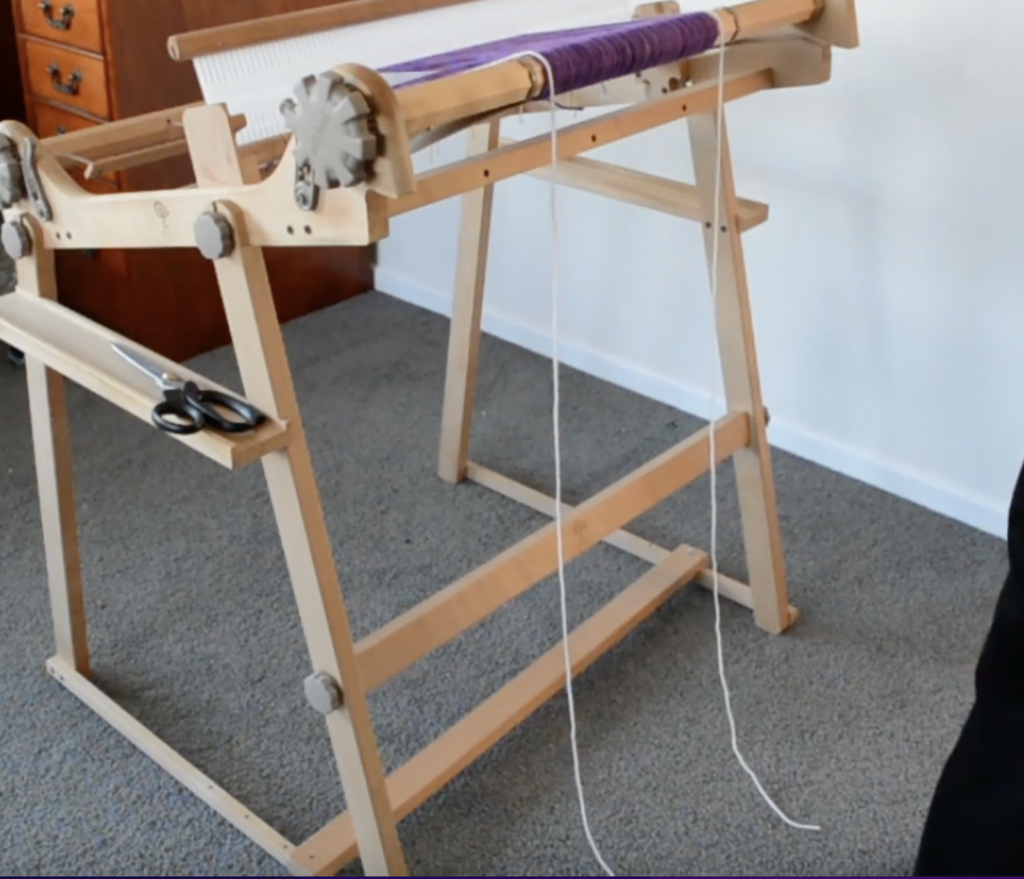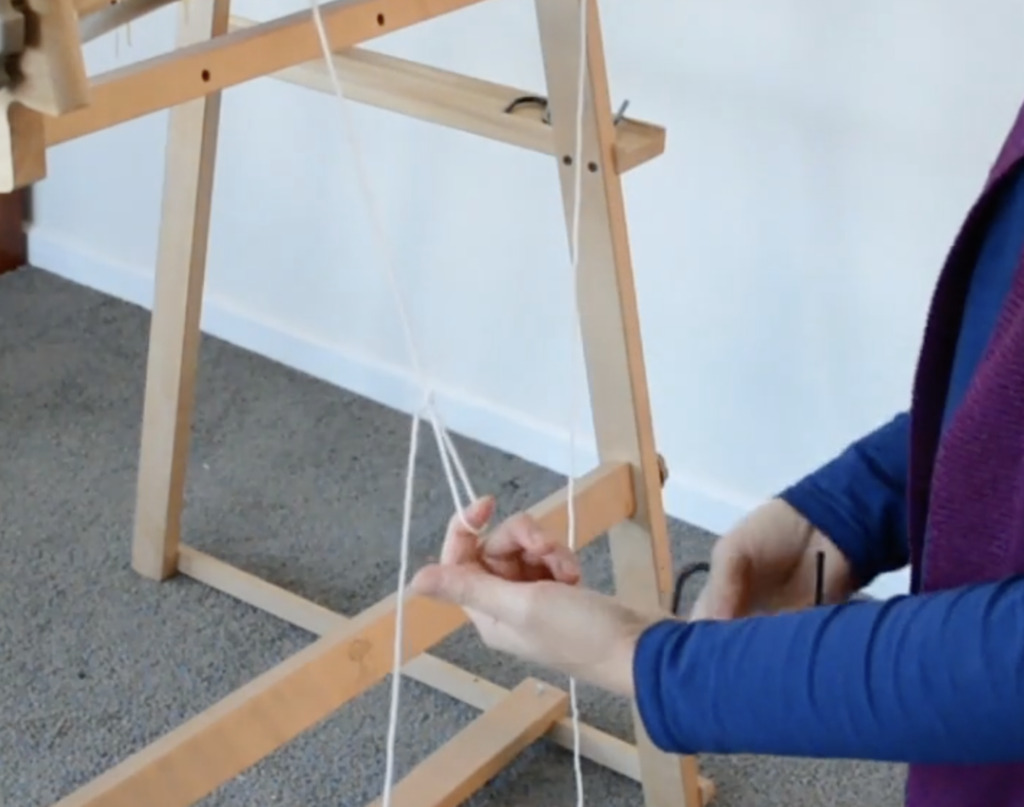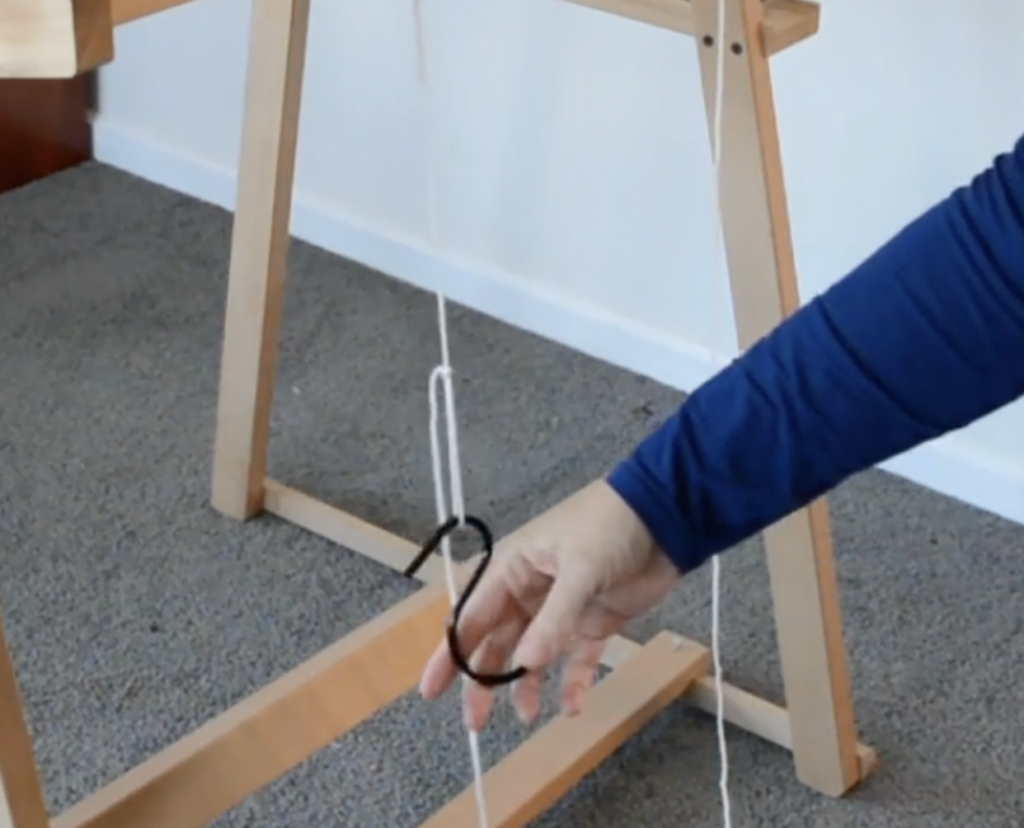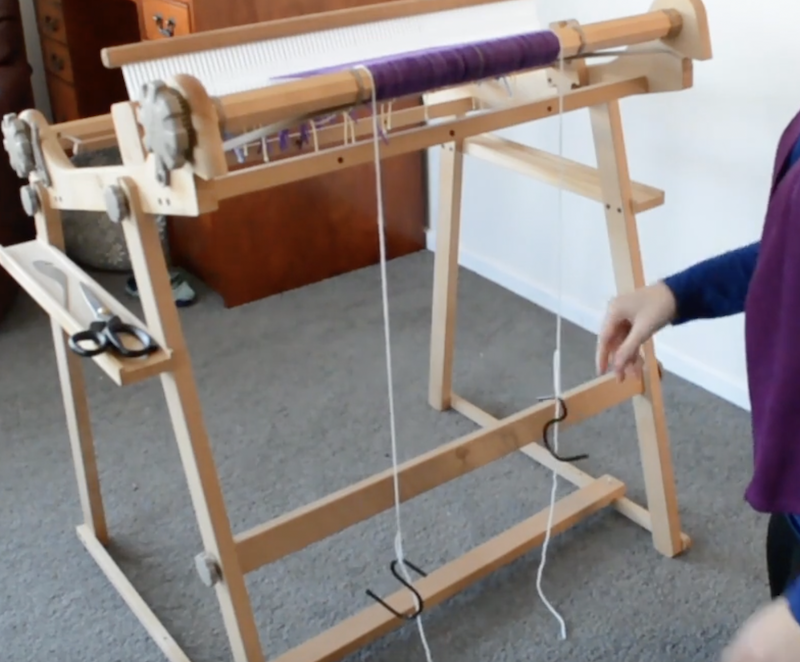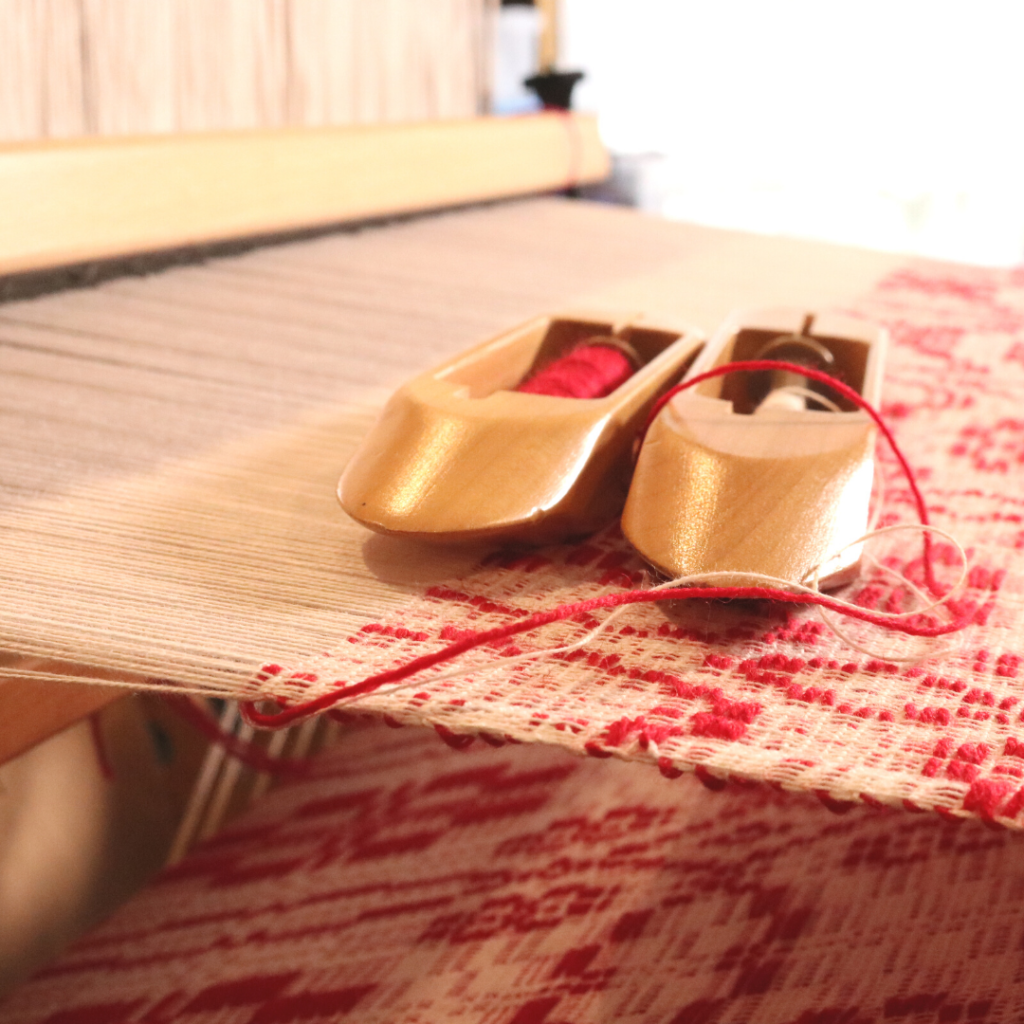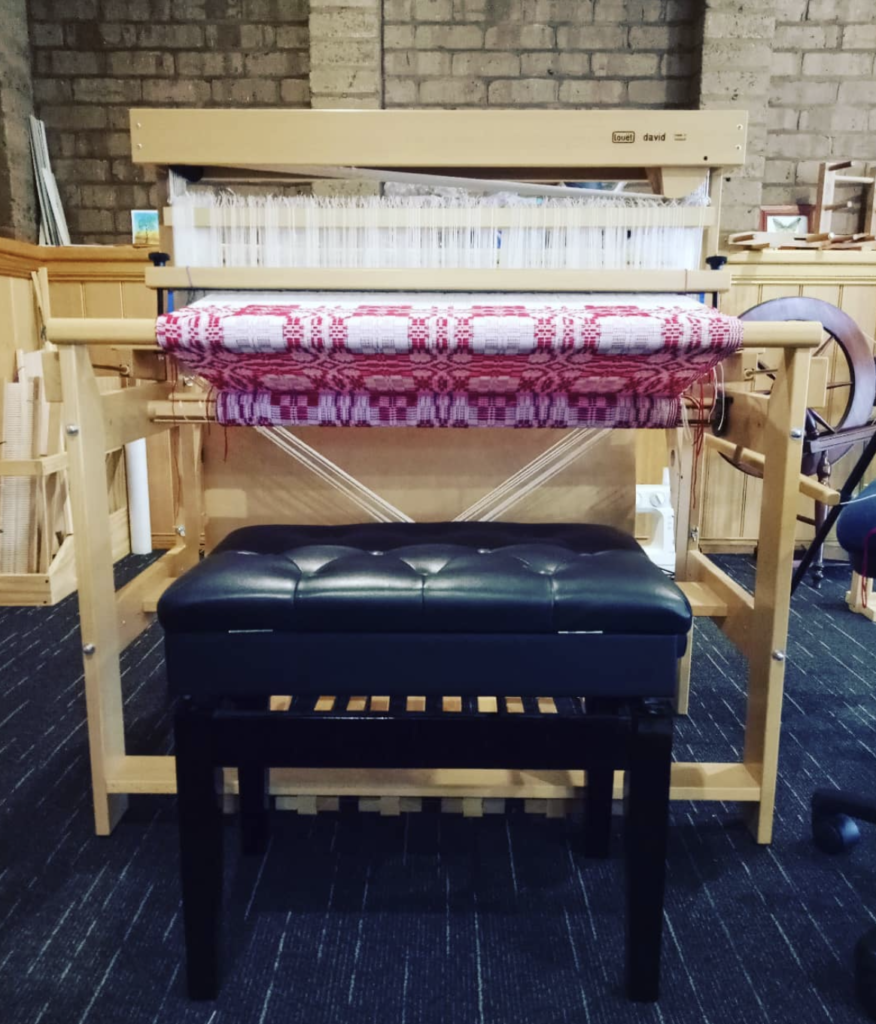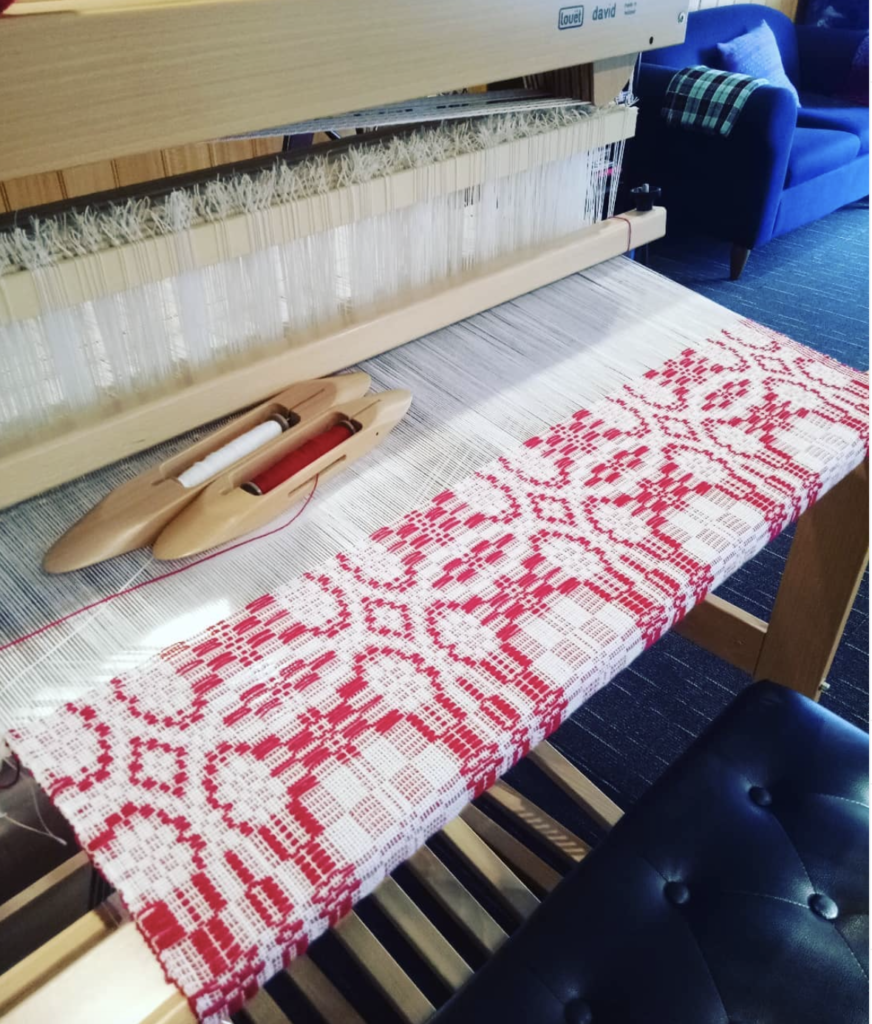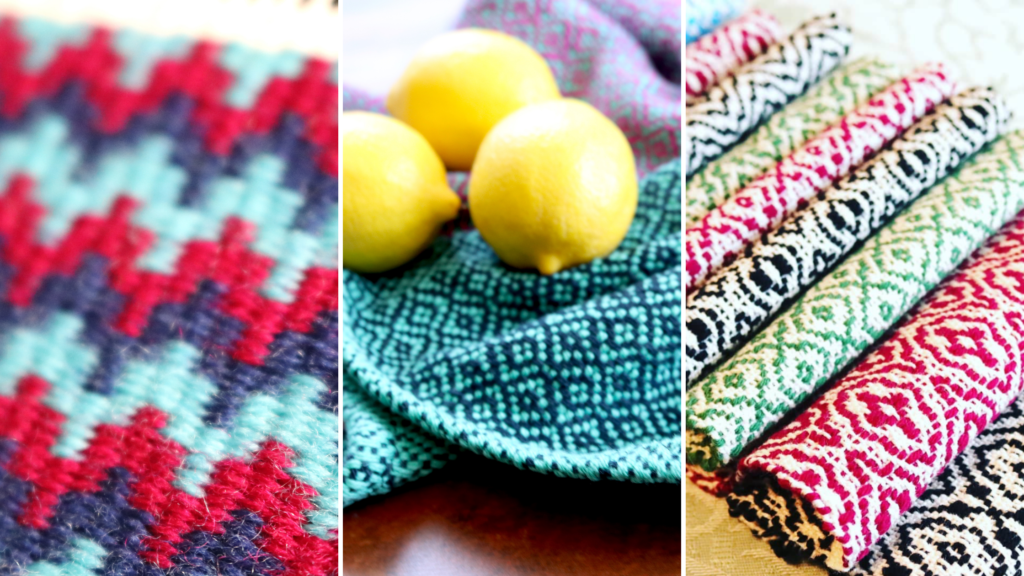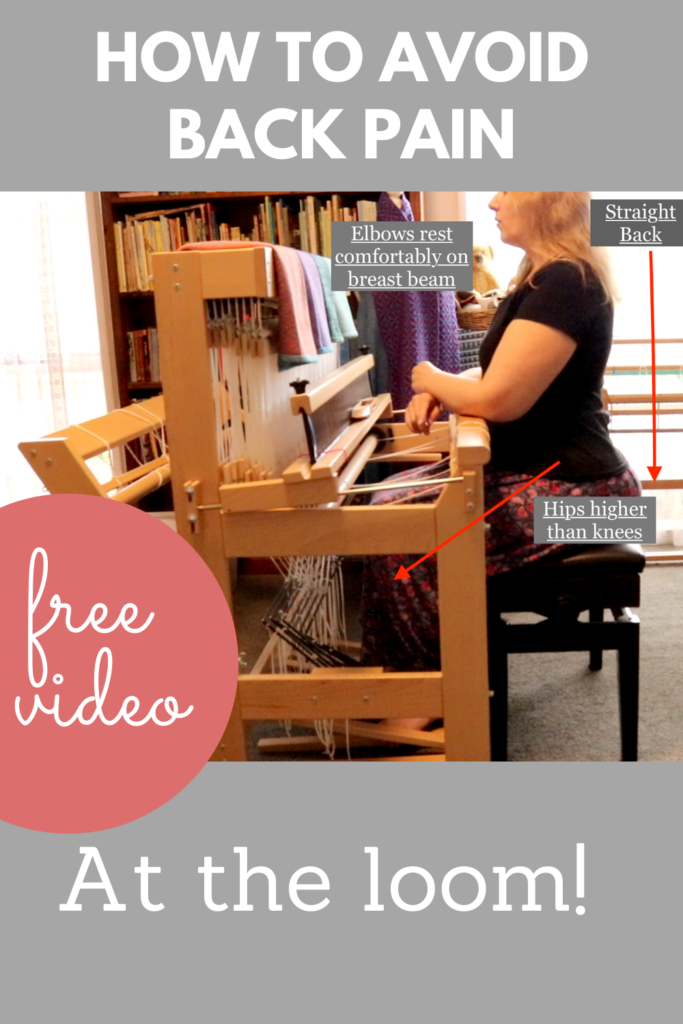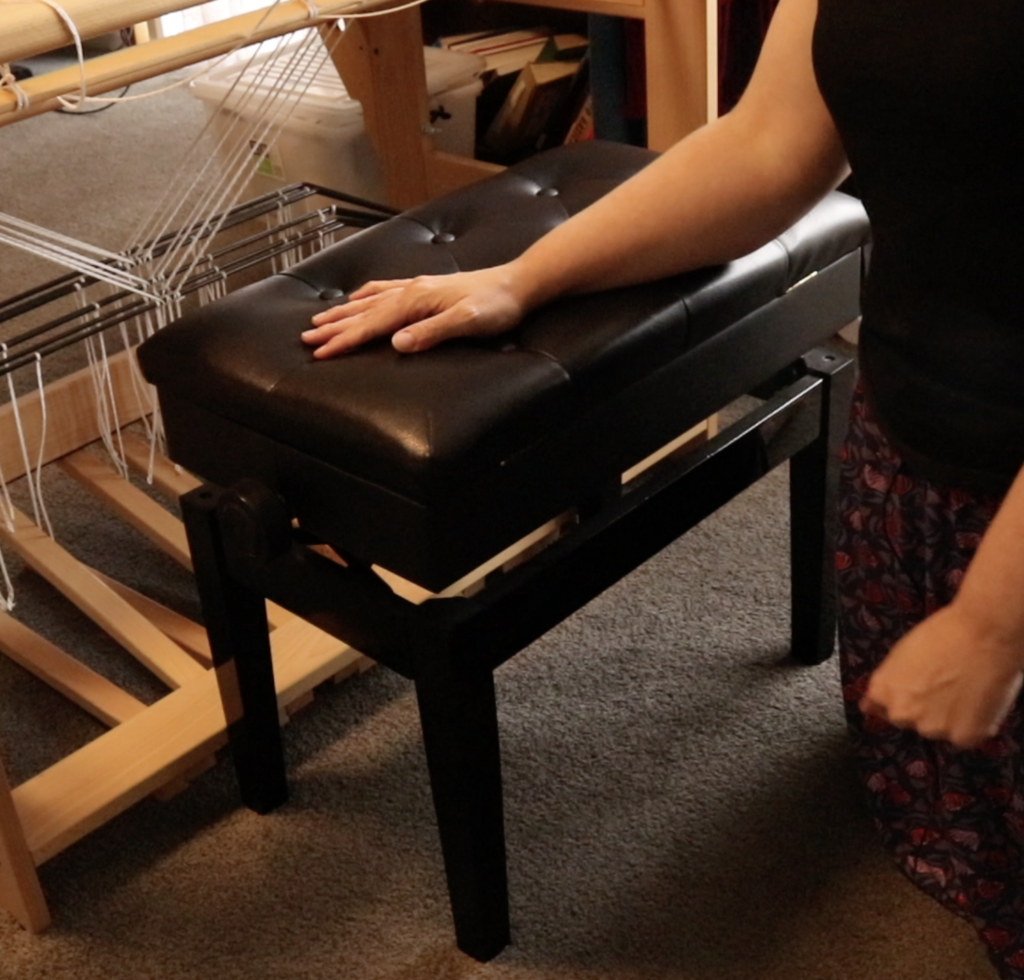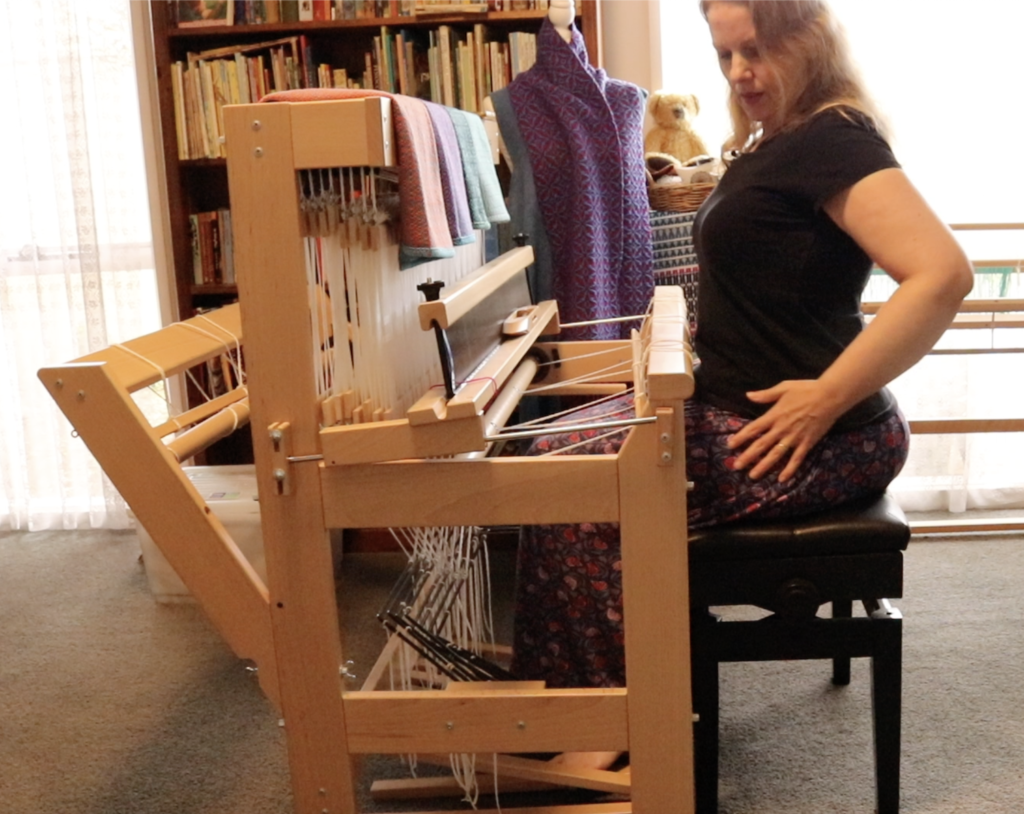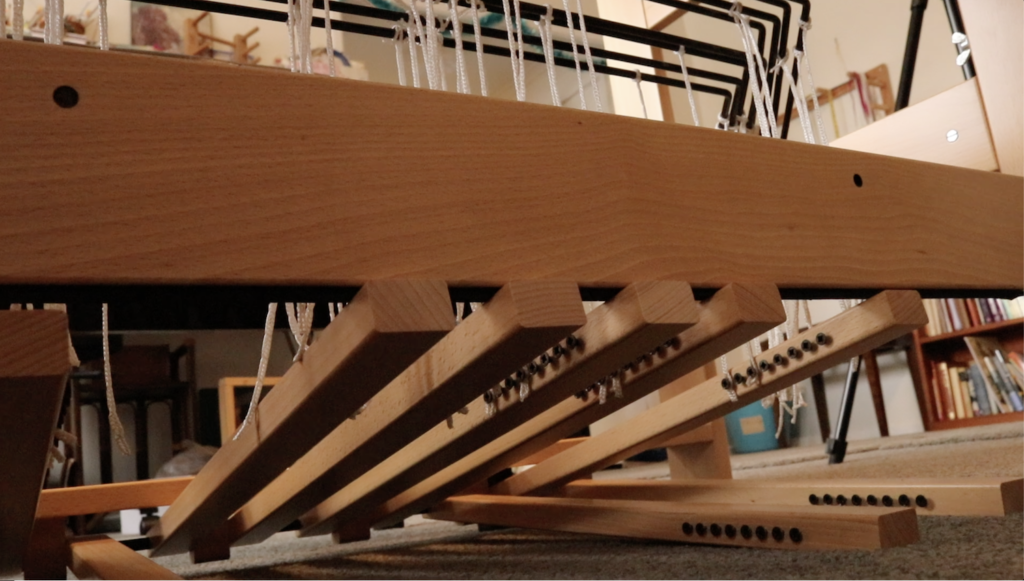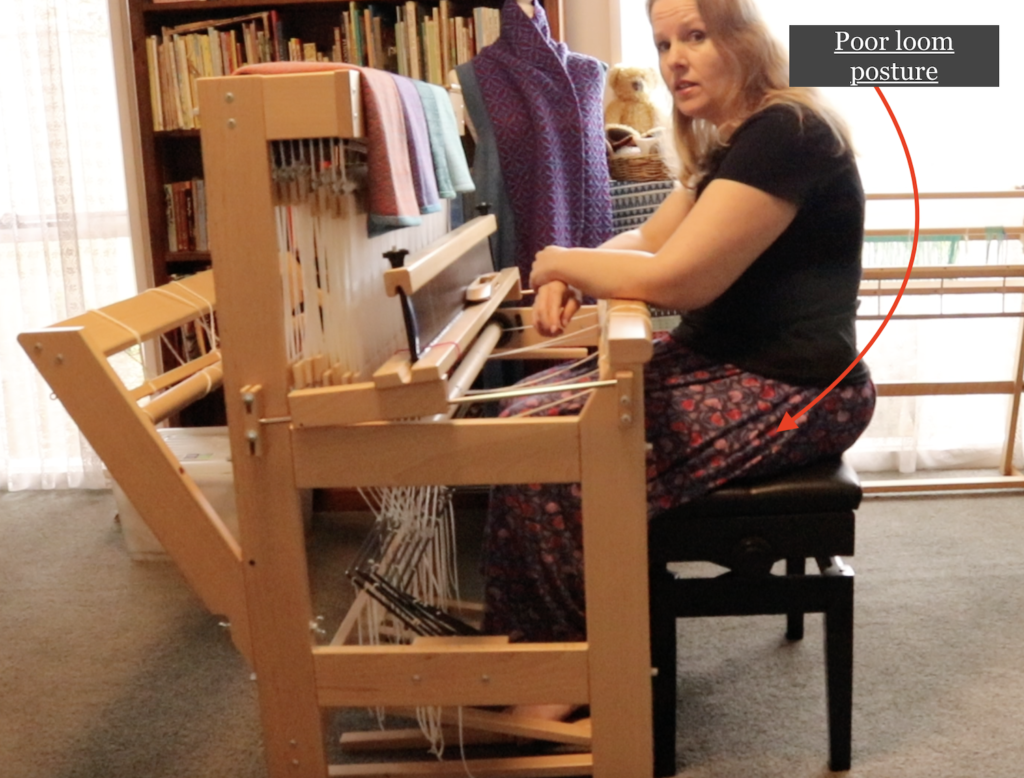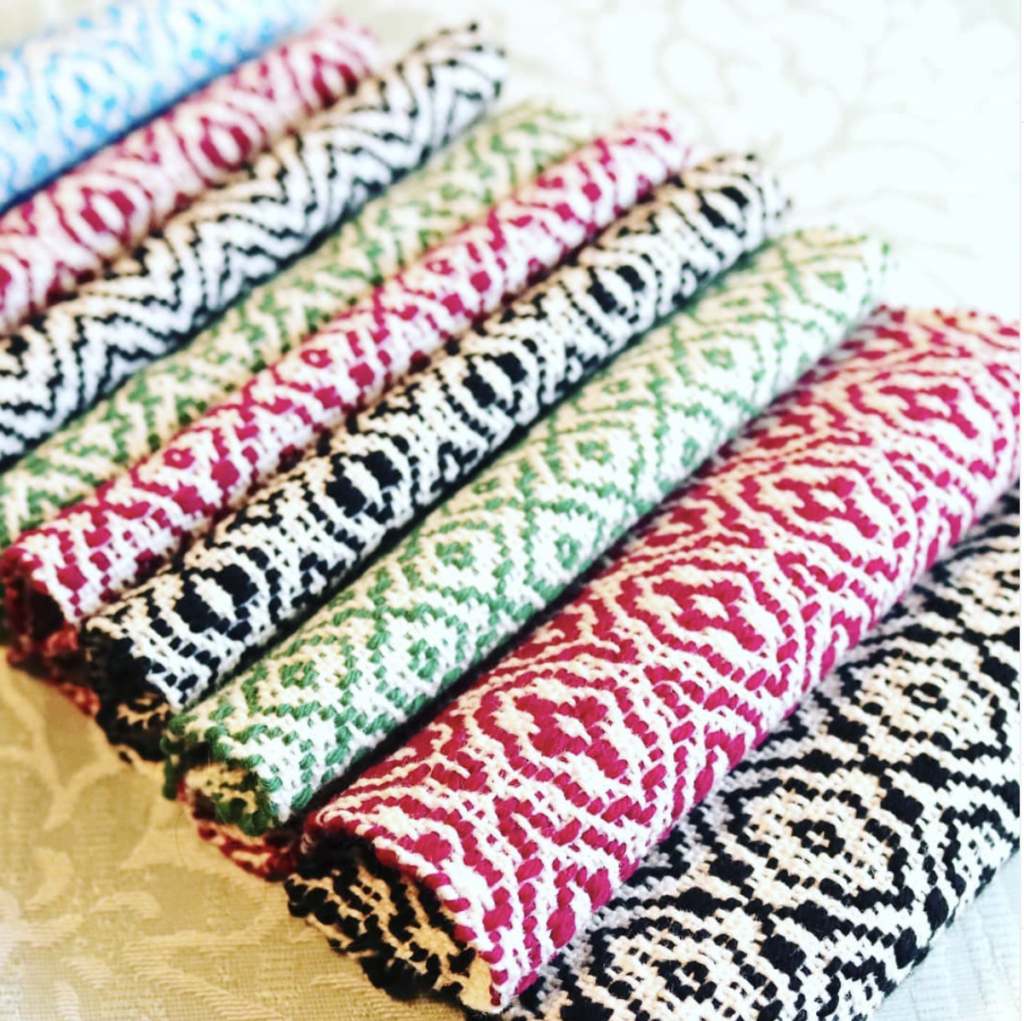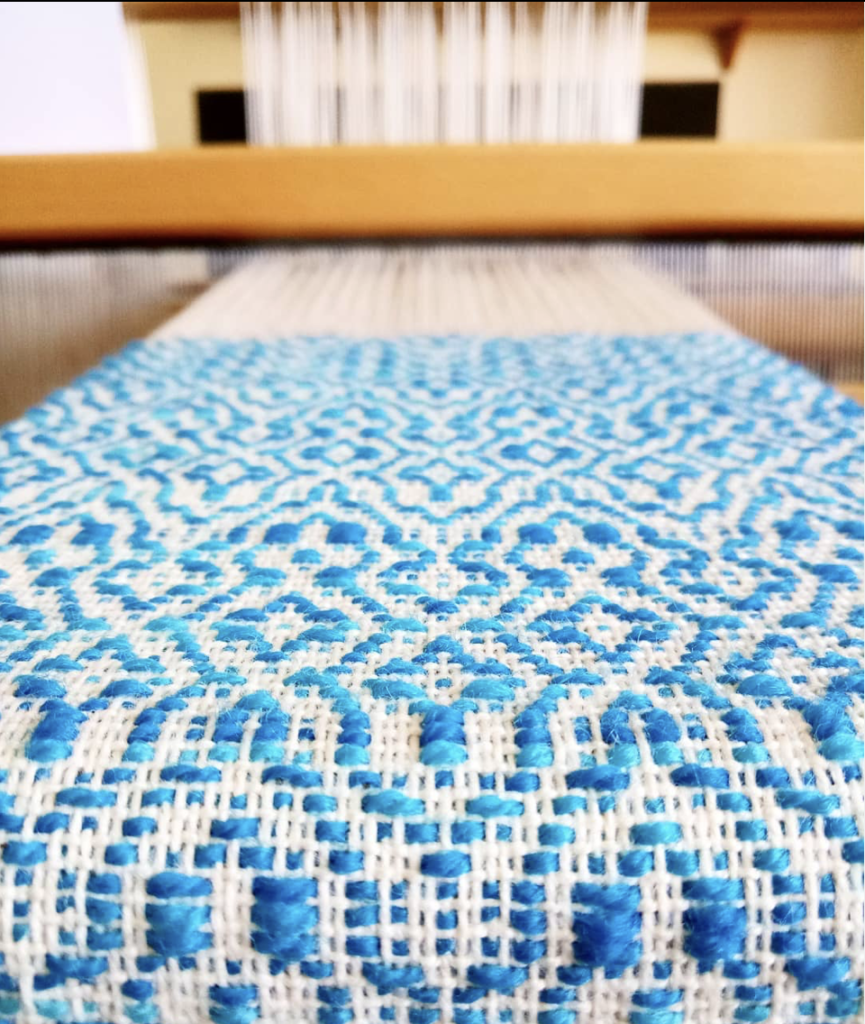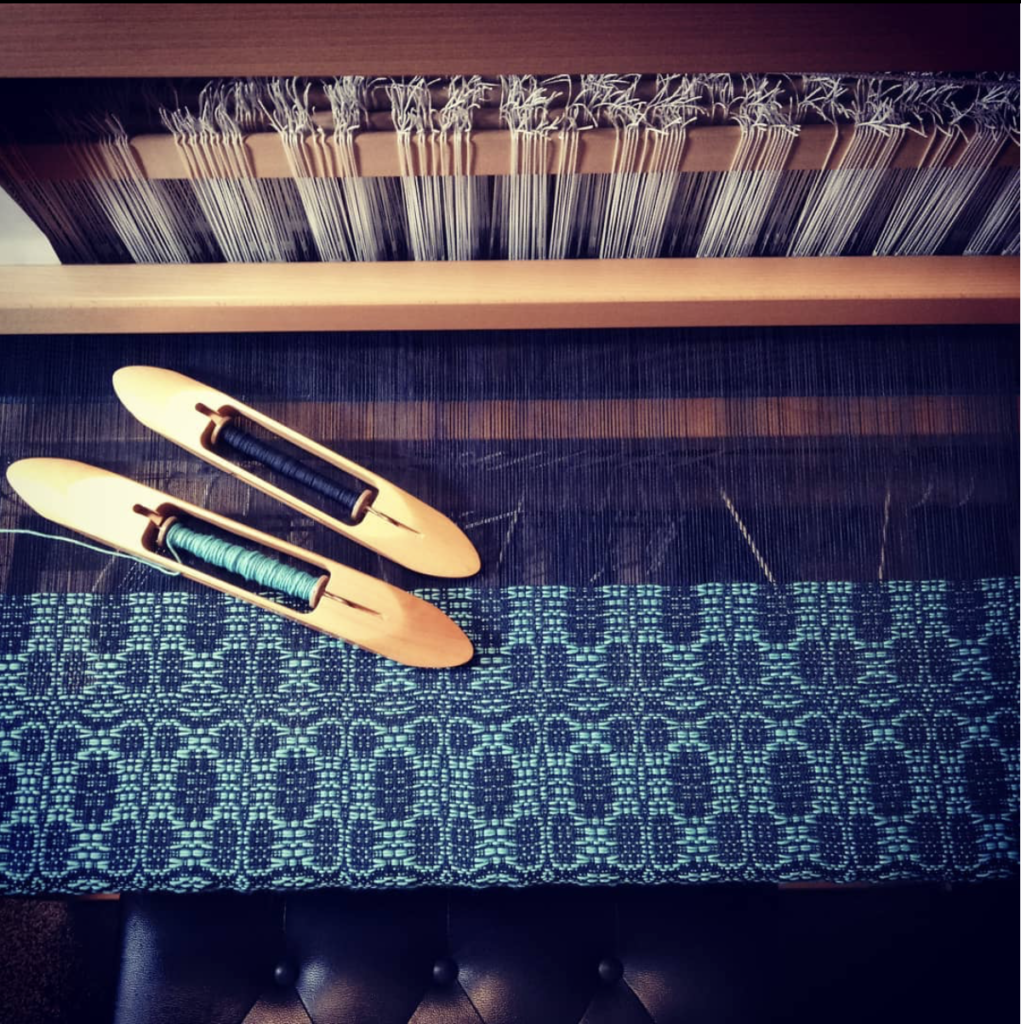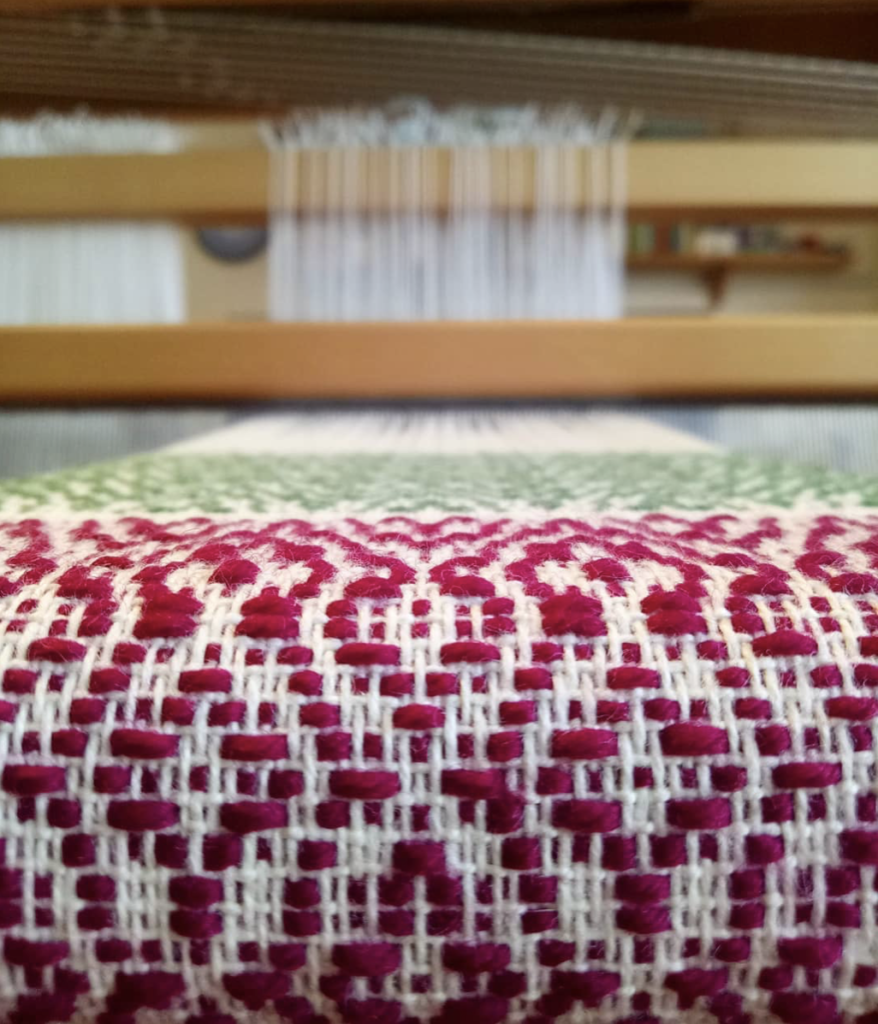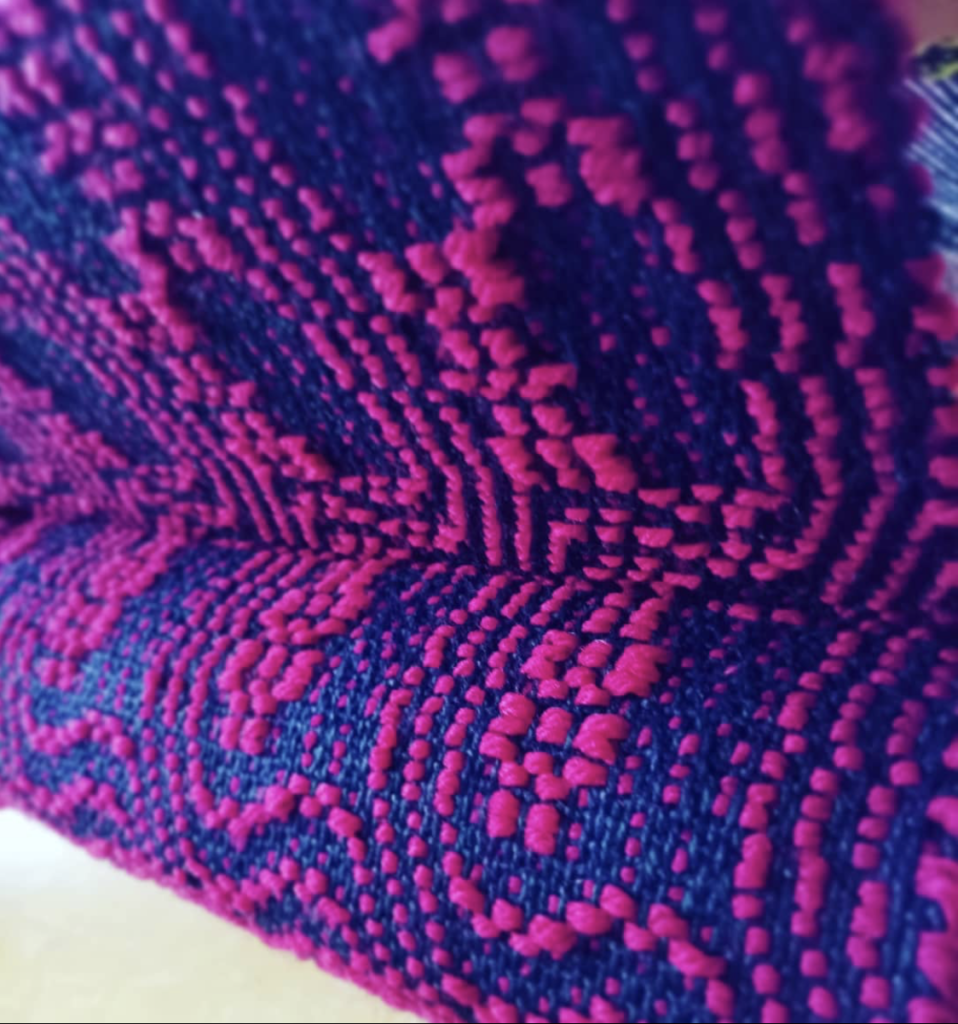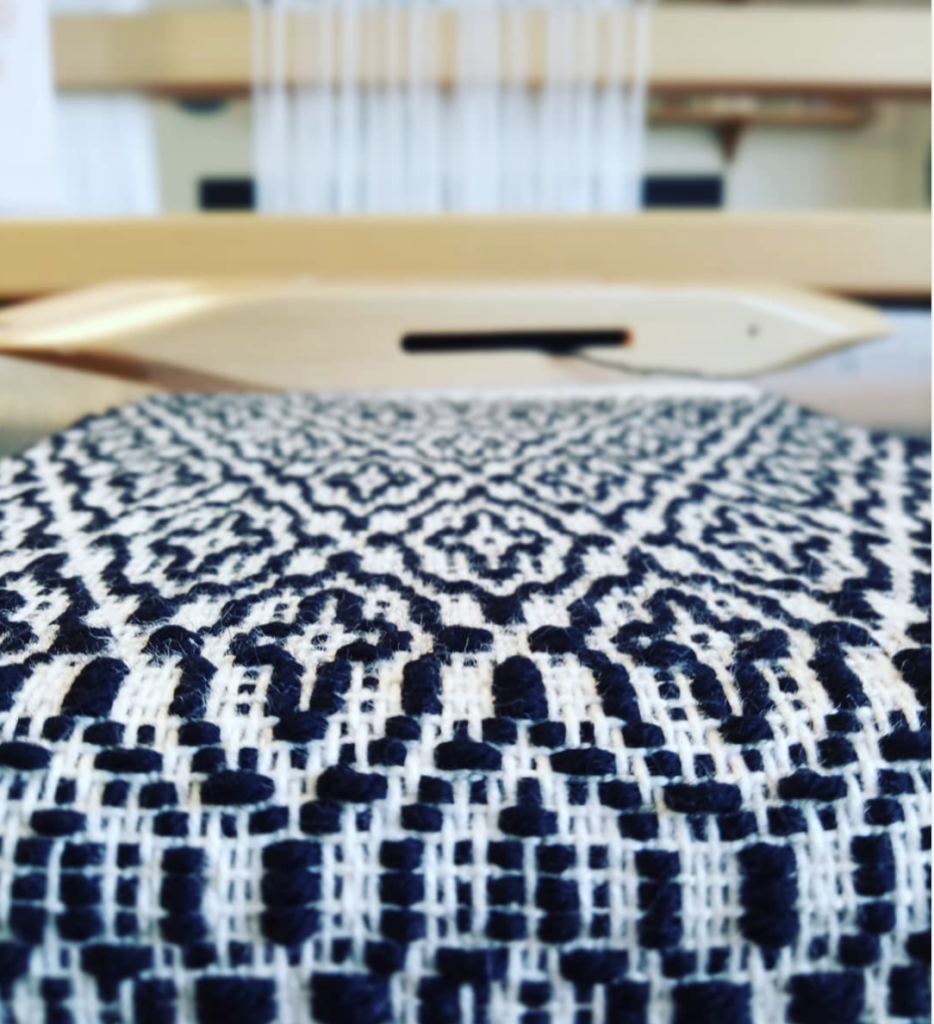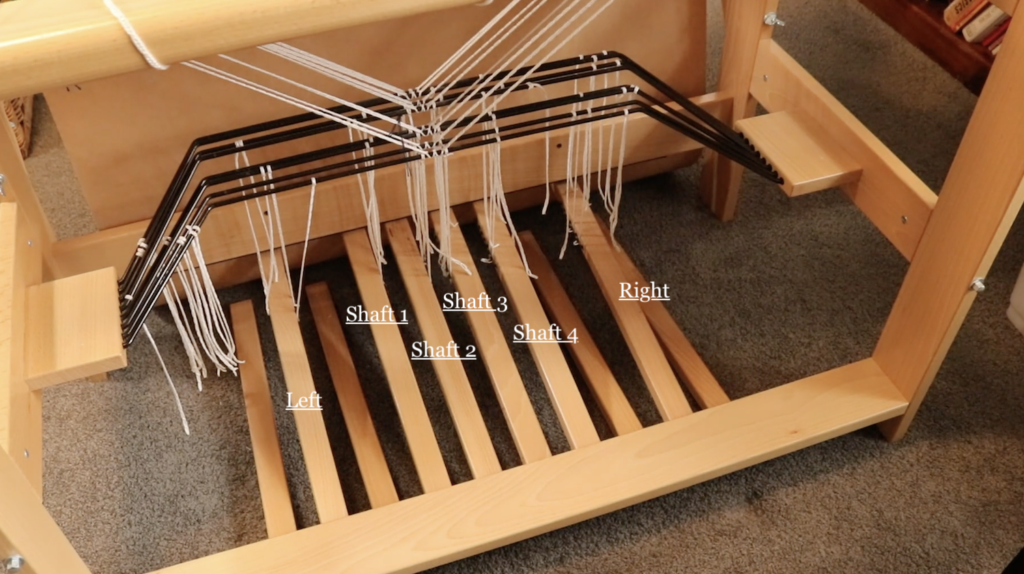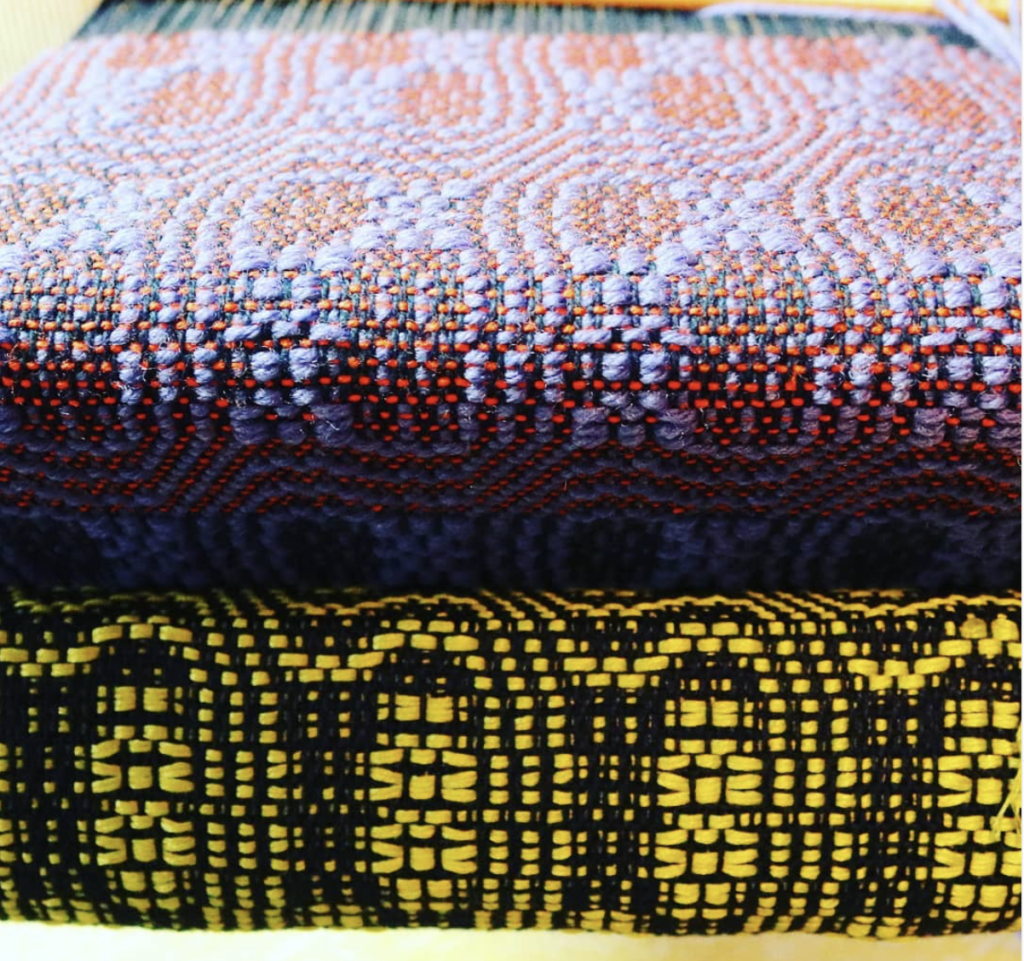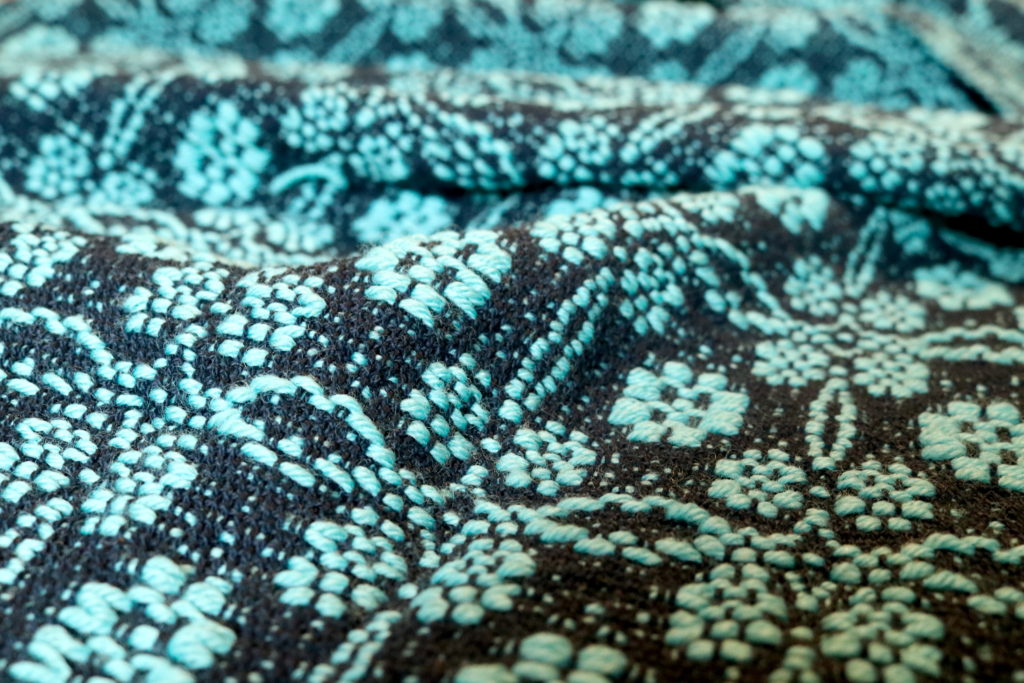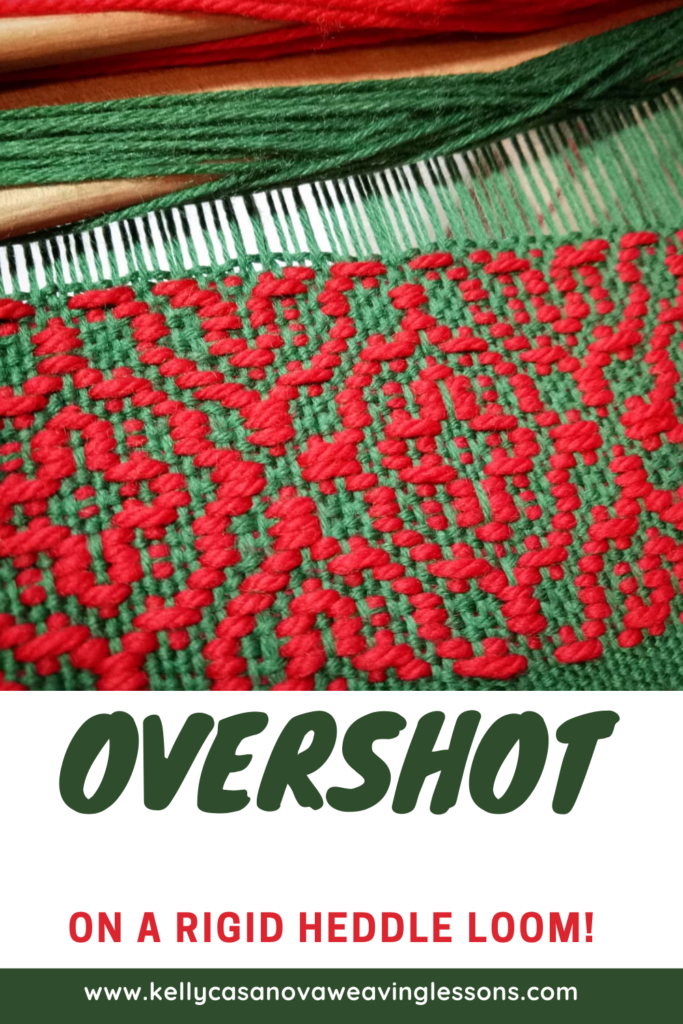If you’re new to weaving or upgrading your toolkit, you might be wondering: What’s the difference between an open and closed boat shuttle—and does it really matter which one I choose? In this post, I’ll walk you through the key differences, the pros and cons of each style, and tips on choosing the best shuttle for your weaving projects.
🧵 What Is a Boat Shuttle?
A boat shuttle is a weaving tool used to pass weft yarn through the shed (the opening created when you raise or lower the warp threads). It typically holds a bobbin or quill on a metal spindle that allows the yarn to feed off smoothly as you weave.
Boat shuttles are most commonly used with floor looms or table looms, but can also be advantageous for rigid heddle weaving.
There are many types of boat shuttle but today we’re going to discuss open and closed boat shuttles with a side feed.
What is warp diving?
I have to explain what I mean by “warp diving” as I’m going to use the term a number of times! It sounds like a whole lot of fun but it’s really not! 😆 So, a warp dive is when your shuttle angles downward at some point during it’s transition from your hand to the opposite side of the loom.
This causes the tip of the shuttle to break through the bottom shed of the weaving and, well, you can probably imagine the outcome.
Warp dives range from minor (phew, the cloth beam fabric caught it in mid dive) to spectacular (picture yourself, or me if you like, crawling around under the loom trying to locate the exact landing position of the shuttle).
OK, that should be crystal clear to everyone now? 😆
What Is an Open Boat Shuttle?
An open boat shuttle is open on the top and the bottom, allowing the bobbin to be visible and easily accessible. You can pop the bobbin in and out quickly, because you can push on it from underneath, which makes unloading and reloading a breeze.

✅ Pros of an Open Boat Shuttle:
- Easy bobbin changes – slide one out and another in with minimal fuss.
- Good visibility – see how much weft yarn you have left at a glance.
- Lightweight shuttle – Without the additional wood to enclose the bottom of the shuttle, an open boat shuttle will usually weigh less and be light to handle.
- Finger control – Some weavers (I don’t use this technique myself, but many do) like an open shuttle for it’s tactile aspect. They like to have more of a feel for how the thread is feeding off the shuttle.
- Slimline design – The height of an open shuttle is usually lower, making it great for a small shed.
⚠️ Cons:
- Slightly more exposed, so the bobbin can jump around a little if the shuttle isn’t smooth-running. It’s important not to overload your bobbin so that it ends up protruding beyond the bottom of the shuttle and rubbing up against your warp threads.
- May not be as suitable for wider warps – Due to the light weight of the shuttle, some weavers may find it difficult to throw far enough when weaving on a wide warp. This can depend on the length of the shuttle too. A longer shuttle is more appropriate for a wider warp.
- More likely to warp dive – This can depend on the design of the shuttle, but my experience has been that warp diving is more common with an open shuttle.
What Is a Closed Boat Shuttle?
A closed boat shuttle has a more enclosed body with smaller slots or holes where the yarn exits. The bobbin is housed inside, which can give a smoother glide through the shed in some setups.

✅ Pros of a Closed Boat Shuttle:
- Smooth and solid – glides easily over the warp, especially on high-tension looms.
- Protects the bobbin – less chance of yarn catching or bobbin misalignment.
- Prevents warp diving! – A nicely shaped closed shuttle can glide so straight and smooth that you will never have to experience the pain of a warp dive!
- Heavier construction – Due to being enclosed, the closed shuttle will be slightly weighted than an open shuttle.
⚠️ Cons:
- Can be slightly slower to change bobbins – If there is no finger hole, changing a bobbin can be fiddly as you can’t adjust from underneath.
- Heavier – this is not necessarily a con, just something to point out for consideration!

Size and Weight Comparison
Here are a few examples from boat shuttles I personally own:
Ashford 11″ open boat shuttle – 71 grams
Ashford 13″ open boat shuttle – 113 grams
Ashford 15″ open boat shuttle – 181 grams
Pickers Ridge hand crafted 13″ closed boat shuttle – 117 grams
Pickers Ridge hand crafted 13″ open boat shuttle – 105 grams
Leclerc 15″ flying shuttle – 494 grams
Schacht 15″ end feed shuttle – 189 grams

Which Shuttle Should You Choose?
Here are a few quick tips to help you decide. Take these with a grain of salt because at the end of the day, shuttle choice is heavily influenced by personal preference and specific project needs:
| Situation | Best Shuttle |
|---|---|
| You are challenged by warp dives | Closed boat shuttle |
| Your loom has a smallish shed | Open boat shuttle (lower profile) |
| You like to see and feel how much yarn is left | Open boat shuttle |
| You use a high-tension floor loom with a wider weaving width | Closed boat shuttle |
| You want a quick and convenient workflow for narrower warps | Open boat shuttle |
Of course, many weavers like to own both types and switch depending on the project.
Bonus Tip: Choose Quality
Whether you choose open or closed, make sure your shuttle is:
- Well-balanced and glides easily across the warp.
- Made of smooth, durable wood to be long-lasting.
- Compatible with your loom’s shed height.
- Not just pretty to look at but also comfortable and practical to use.
A good-quality shuttle can make a big difference in your weaving speed and enjoyment.
*This post contains affiliate links. For further information, please see my disclosure policy.
Make the choice that fits you best!
There’s no one-size-fits-all answer—but understanding the pros and cons of open vs closed boat shuttles helps you make an informed decision that suits your weaving style. If you’ve never used a boat shuttle before, see if you can try one out at a weaving supplier, guild or with a friend.
If you are a rigid heddle weaver you might be wondering if boat shuttles are a tool that you could use? Well, head on over to this article next to find out all about using a boat shuttle with a rigid heddle loom!
👉 Have a favorite shuttle? Let me know in the comments! Share the details so other readers can learn and make informed choices 😊
Until next time…
Happy Weaving!




